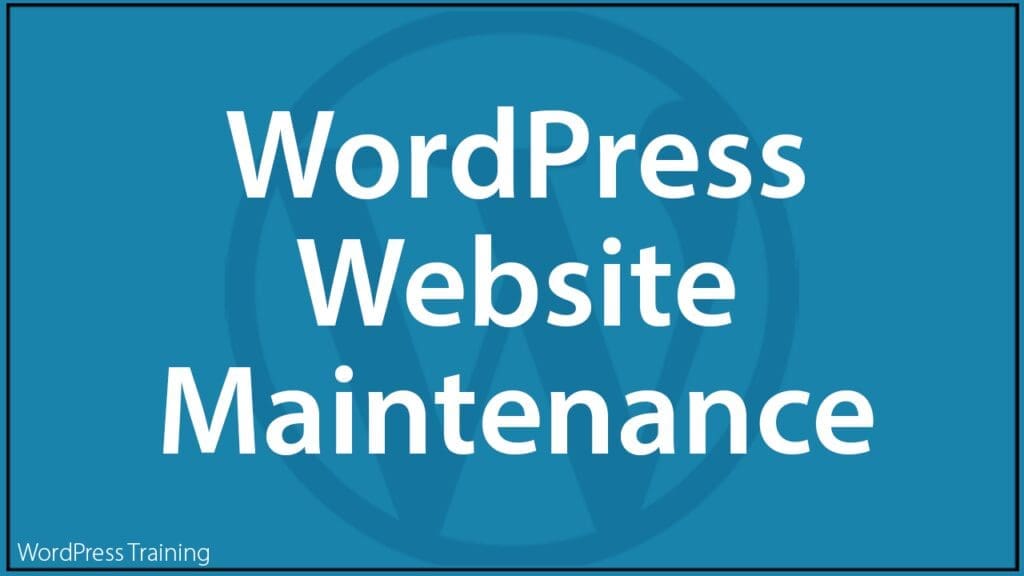WordPress Site Maintenance
 If your website runs on WordPress, it’s vitally important to keep it regularly updated, secure, and optimized.
If your website runs on WordPress, it’s vitally important to keep it regularly updated, secure, and optimized.
This comprehensive guide explains why website maintenance is important and essential, provides an overview of the WordPress site maintenance process with checklists and links to detailed step-by-step tutorials, and additional useful information to help you fully understand WordPress website maintenance.
***
![]()
The tutorials linked from this section are designed to help non-technical users maintain their own WordPress sites regularly updated, and keep their sites fully protected, secure, and optimized.
While WordPress site maintenance is vitally important, the process can initially be time-consuming, as it involves learning various technical concepts, setting up accounts with different services (e.g. Google Search Console) and figuring out how to use time-saving plugins and tools. It also requires a commitment of time and effort to perform all of the regular maintenance tasks required.
If maintaining your WordPress site regularly updated, secure, and optimized is not something that you are willing to learn or able to do, then we recommend the following:
- Go through this guide to understand why WordPress site maintenance is necessary and all the various processed involved, and
- Contact a professional WordPress website developer or WordPress agency offering WordPress site maintenance or website care plans and consider engaging their services.
Regardless of the size of your business, if your website runs on WordPress, DO NOT neglect WordPress site maintenance … continue reading to learn why!
WordPress Site Maintenance – Overview
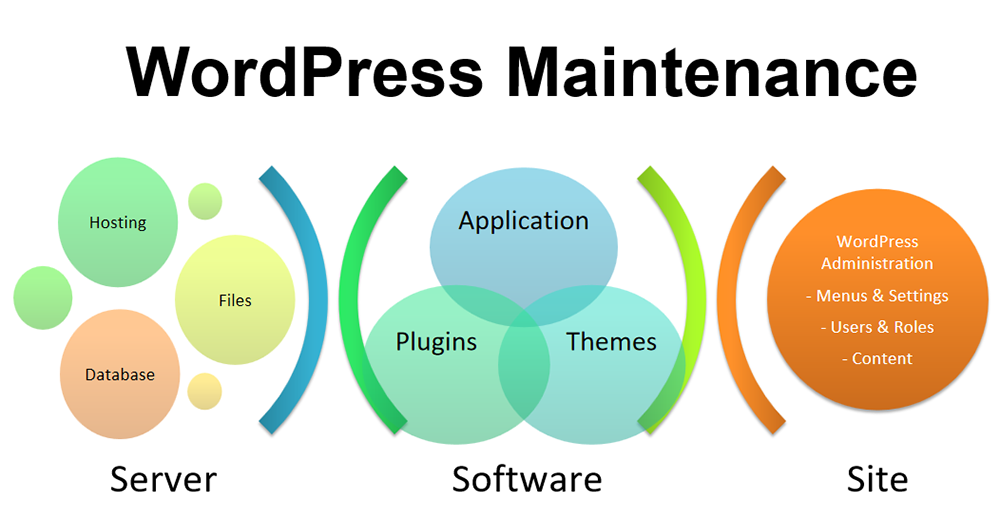
WordPress maintenance is a vitally important aspect of using your WordPress site effectively.
WordPress sites need regularly maintenance to prevent website errors and loss of valuable data, and to protect against hackers and malicious users.
There are great tools and solutions available that can save you time and automate various WordPress maintenance tasks. However, there is no single plugin or automated solution that can perform all the maintenance steps required to keep your WordPress site regularly updated, completely backed up, and fully protected.
WordPress maintenance is a process that involves coordinating various components of your website presence.
These components include:
- The server hosting your WordPress files and database
- Your WordPress software and add-ons (e.g. plugins and themes)
- Your WordPress site (administration, settings, content, etc.)
![]()
Creating and running an effective WordPress site maintenance routine not only involves understanding the processes discussed here, but also essential areas like WordPress Management, WordPress Optimization, and WordPress Security.
Why Is WordPress Site Maintenance Important?
Unlike static websites where nothing changes unless you actually modify the content on your site or the code in your files, WordPress websites and blogs are dynamic, which means that your content is continually being regenerated for users when they visit your site and click through to different sections, or use functionalities like search filters, interactive forms, etc.
Static vs Dynamic Websites – Key Differences
Briefly, here are some of the key differences between a static and a dynamic website:
- Content Delivery – With a static website, the content remains the same for every user. Each page is a separate HTML file that doesn’t change unless manually updated. With a dynamic website, content can change based on user interactions, preferences, and other variables. WordPress uses PHP and a database to generate content dynamically.
- Maintenance Complexity – Static websites are simpler to maintain since their content is fixed. Updates involve editing HTML files. Security risks are lower as there are no databases or server-side scripts. Dynamic websites, on the other hand, require regular maintenance. This includes updating WordPress core, themes, and plugins to prevent security vulnerabilities, as well as database optimization and regular backups.
- Interactivity – Static website provide limited interactivity. These are good for informational sites where content doesn’t need frequent changes. Dynamic websites are highly interactive, supporting features like user accounts, e-commerce, and content management systems (CMS). WordPress allows for easy content updates and management through its admin panel.
- Scalability – Static websites are less scalable due to the manual effort required to update each page. Adding new content to a static website can be time-consuming. Dynamic websites are more scalable. Content can be added, modified, or removed easily through the CMS, making it suitable for blogs, news sites, and e-commerce.
- Performance – Static websites generally offer faster loading times since pages are pre-rendered and served directly from the server. Dynamic websites may have slower loading times due to the need to process scripts and retrieve data from the database, but their performance can be optimized with performance plugins that offer caching and other techniques.
- Security: Static websites have fewer security risks as there is no backend database or server-side processing. Dynamic website have higher security risks due to the complexity of the system. Regular updates and security measures are necessary to protect against vulnerabilities.
The bottom line: Having a dynamic web presence means having more things that can go wrong more often. Therefore, more things need to be maintained and checked for more often.
WordPress is the leading Content Management System (CMS) platform on the web, used to power millions of websites worldwide.
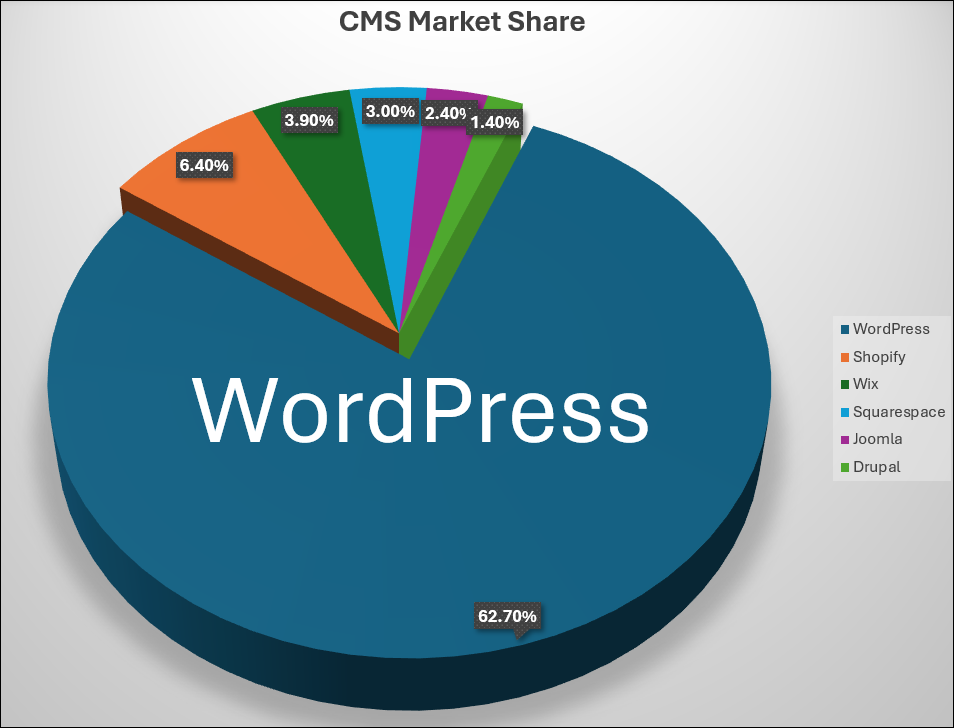
WordPress is not only the market leader, but it is also constantly evolving.
As WordPress continually evolves, it must update its core software application regularly in order to:
- Prevent malicious users from exploiting vulnerabilities that would enable them to hack into millions of WordPress sites,
- Fix bugs discovered in previous versions, and
- Provide new enhancements and improved features to users
Because of this, WordPress versions frequently become outdated and are regularly updated.
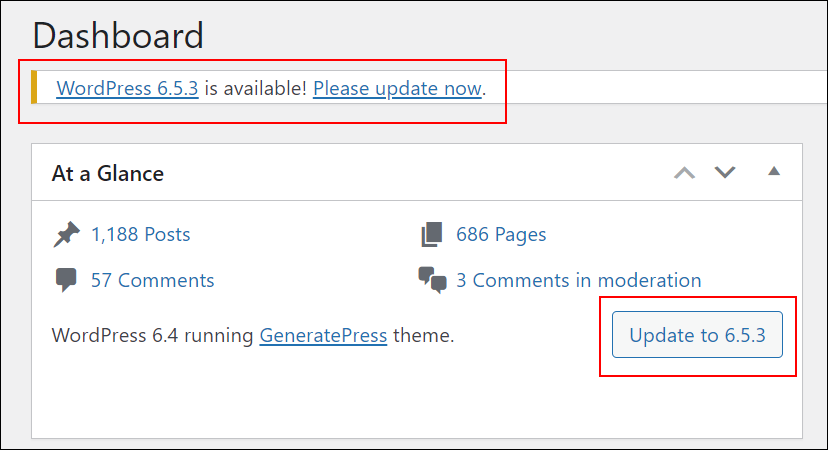
Updating your WordPress site to the latest version creates a number of maintenance flow-ons, each with their own potential issues and challenges.
For example:
Maintenance Issue #1 – Keeping Your WordPress Site Regularly Updated
WordPress releases new software versions around every 3 months or so to provide users with new features, bug fixes, and improved site security.
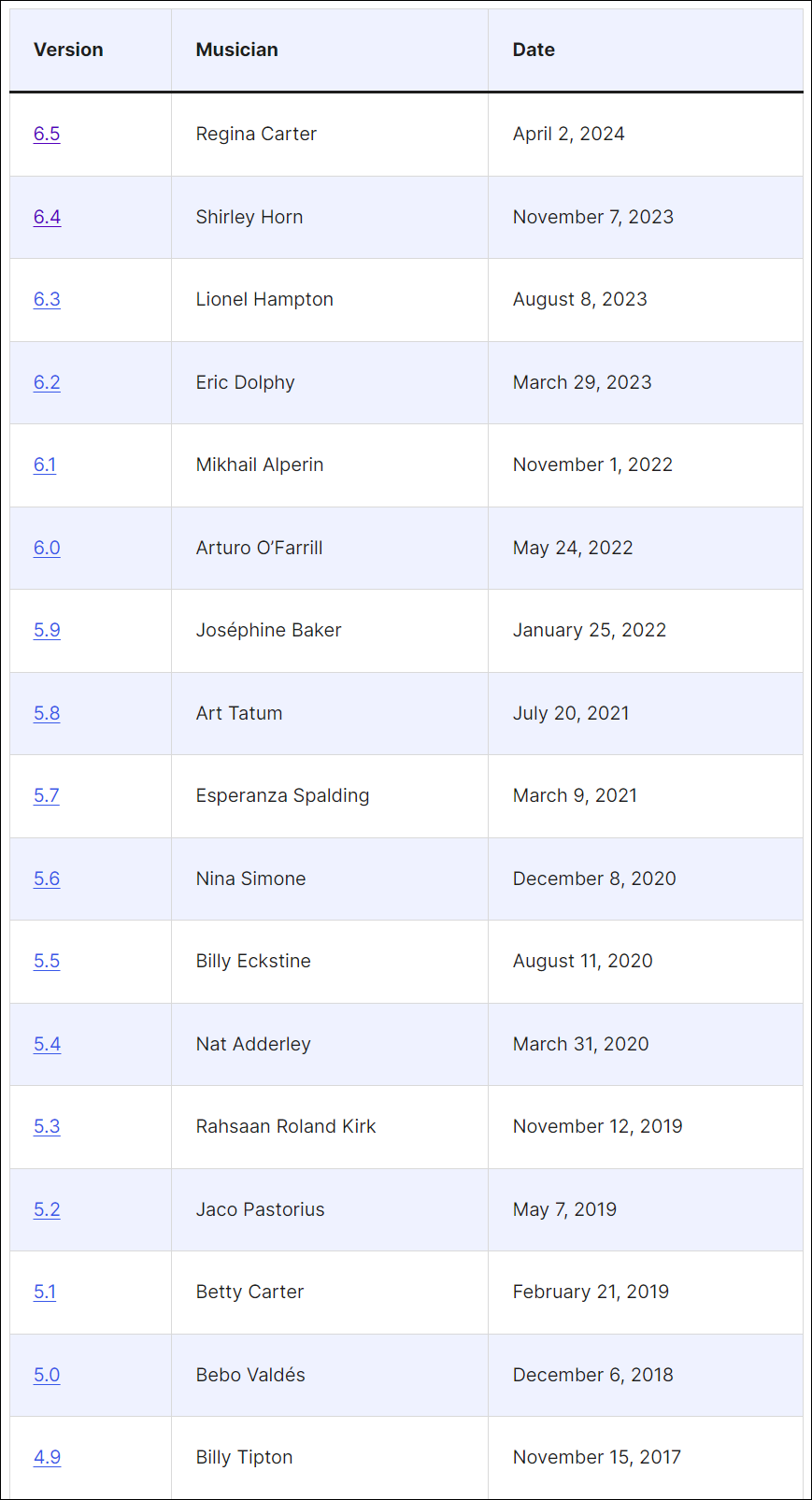
WordPress releases both major version updates (often with new features) and minor version updates to address bug fixes and security vulnerabilities found in previous versions.
It is vitally important, then, to keep your WordPress site up-to-date and make sure that all major releases and minor maintenance and security releases are installed.
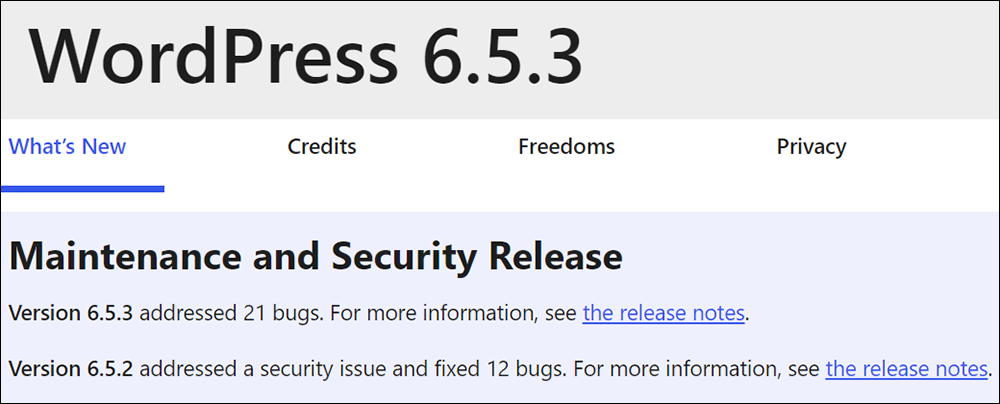
So, the first thing to keep in mind is that you will need to regularly update your WordPress core software installation to ensure optimal performance and the maximum security of your site.
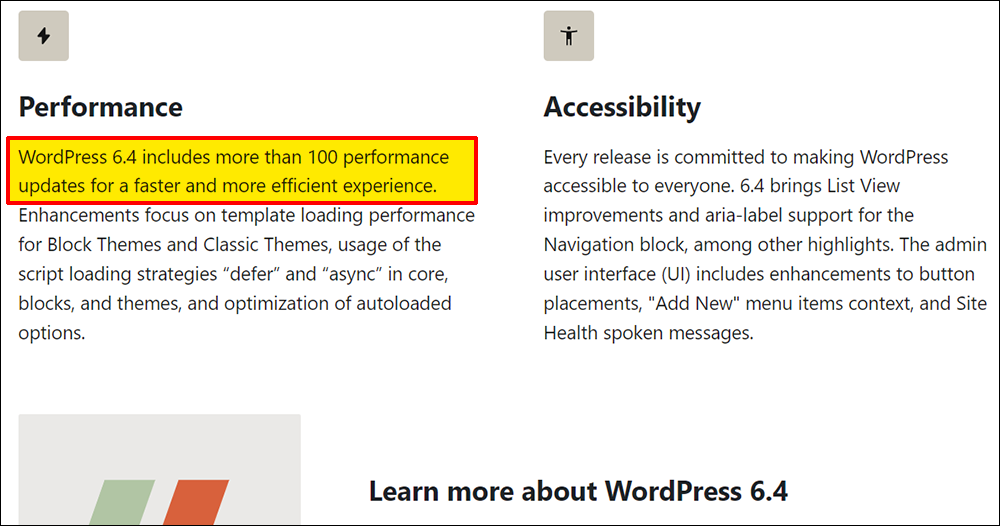
Neglect this very important step and you will expose your site to hackers looking to exploit and security vulnerabilities from previous versions.
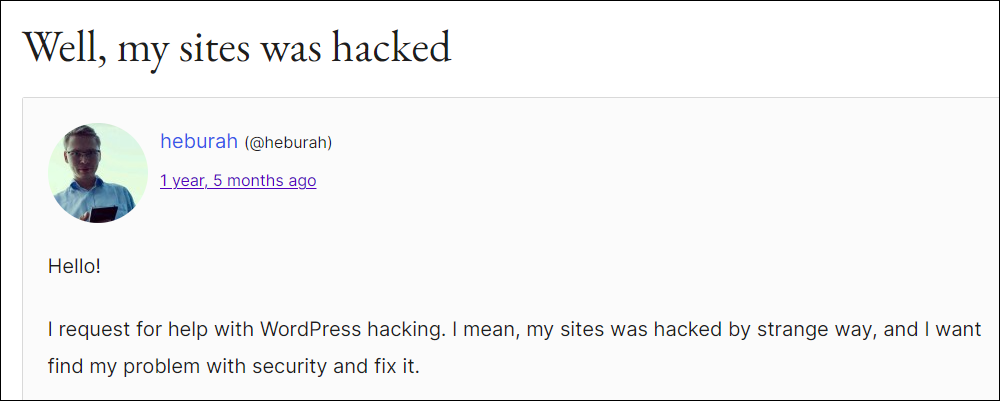
Maintenance Issue #2 – Keeping Your WordPress Plugins & Themes Regularly Updated
When WordPress releases a new update to its core software, this can have a flow-on effect on the WordPress plugins and/or themes installed on your site.
Your plugins and themes may become outdated and need to be updated as well to prevent conflicts with the new WordPress version release and create errors on your site.
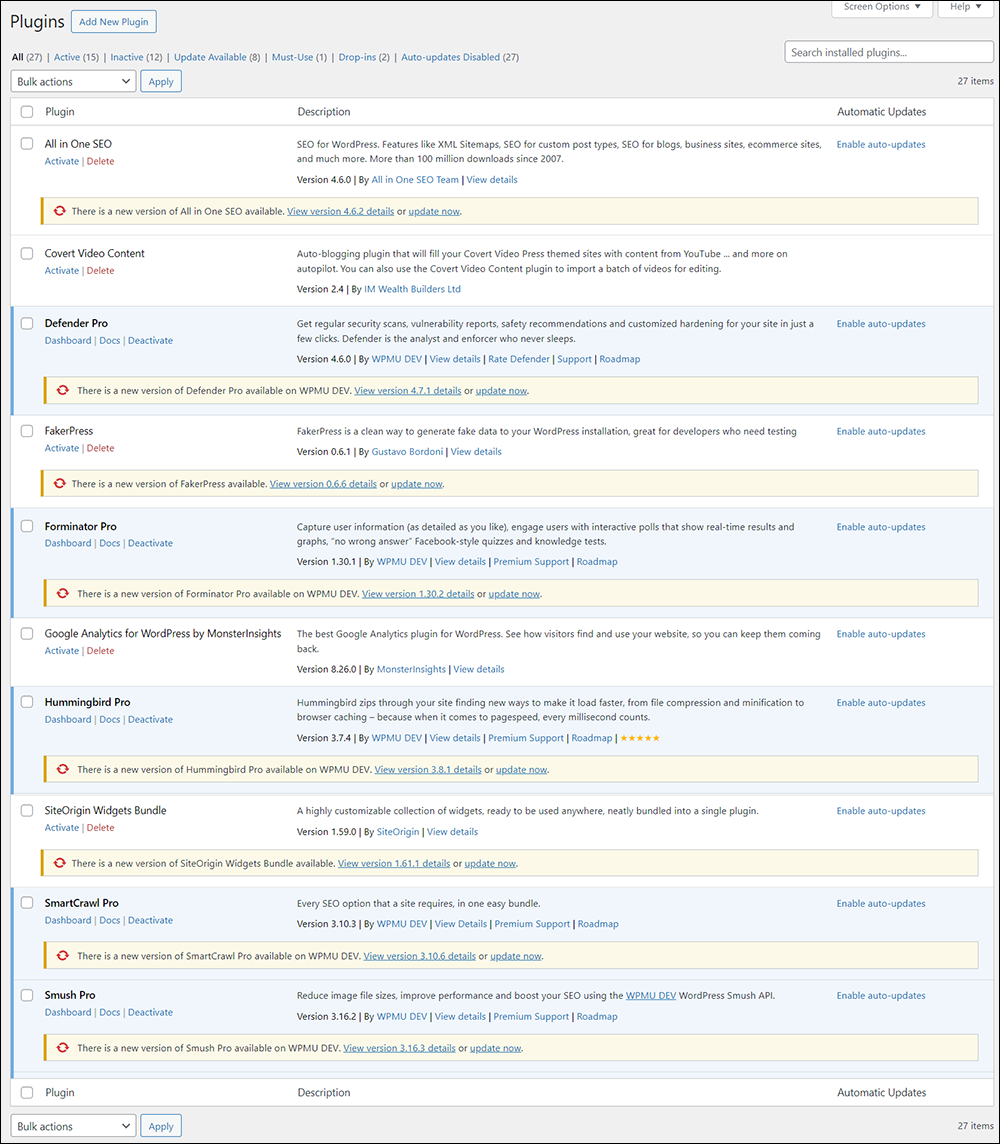
As plugins and themes are developed and maintained by 3rd-party developers, updates can happen at various different times. Some developers are highly responsive and will update their plugins or themes almost immediately, and some will take longer to respond.
In addition to updating plugins and themes to address incompatibility issues with older WordPress versions, many plugin and theme developers also add new features and improvements and address bug fixes and security issues in their own products, so they are also putting out new version releases all the time.
What this means is that you will have to implement a regular schedule of checking your plugins and themes for new updates (e.g. weekly), or set up processes and tools to automatically update these.
This is not uncommon. As you add more plugins to your WordPress site, your site maintenance needs will also grow.
The lack of good maintenance habits by website owners in keeping WordPress core software, plugins, and themes updated posts such a significant threat to online security, that at one point even Google started sending out reminder notifications to WordPress users to keep their sites updated … and Google doesn’t even own WordPress!
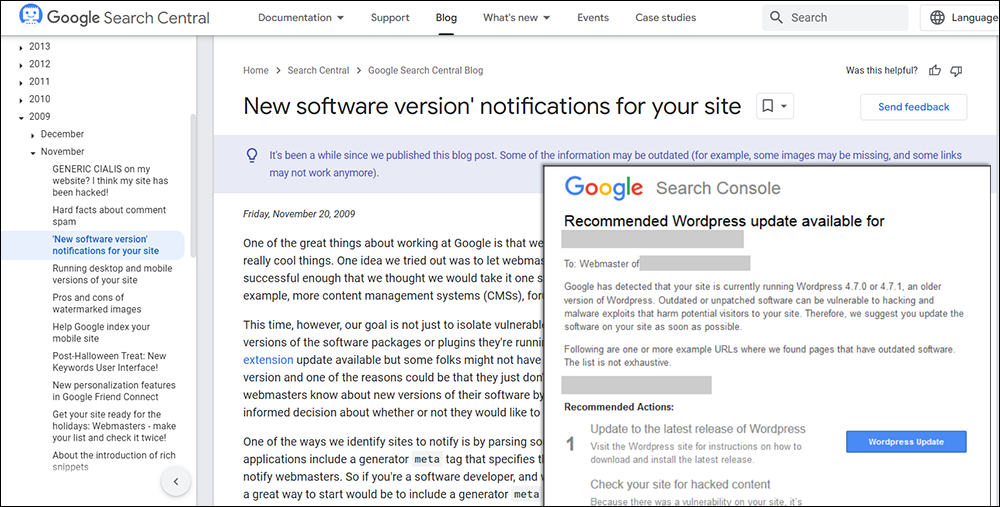
Maintenance Issue #3 – Protecting Your Site From Security Vulnerabilities
Performing regular maintenance is vitally important to protect your WordPress site from hackers and malicious users.
If you are a small business owner, you may think that WordPress maintenance doesn’t apply to you.
You are wrong!
Why would hackers care about your little business site?
As shown earlier, WordPress is the world’s leading CMS platform, used by millions of businesses and individual users worldwide.
This makes WordPress the leading target for hackers.
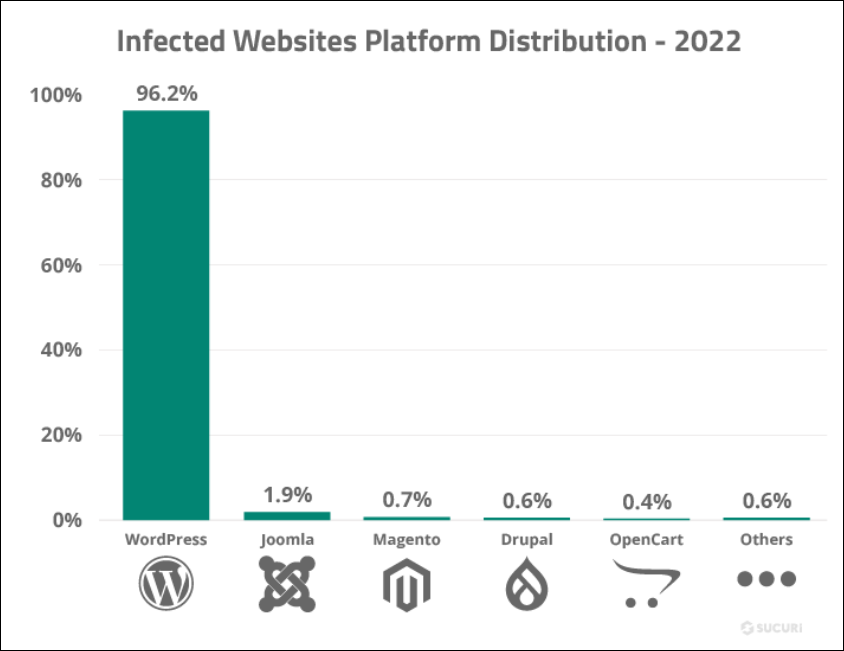
Forget the commonly depicted lone individual sitting in a dark room wearing a hoodie scanning the web on their laptop for careless prey.
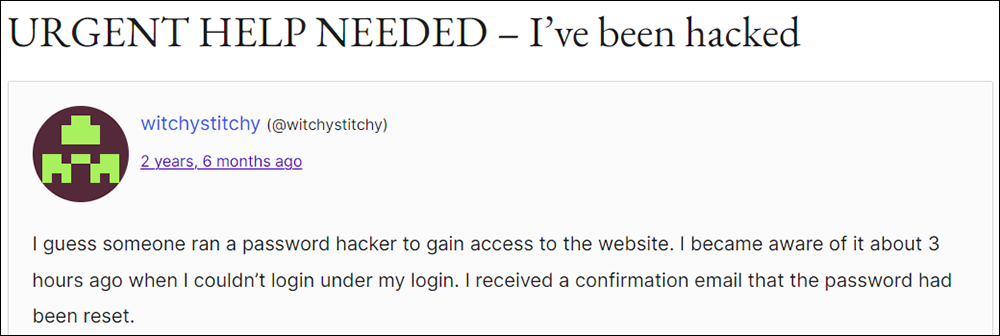
Modern hacking today is done by sophisticated syndicates developing powerful new malicious bots and software that cast a wide net and automatically search the web to find sites with older software installations to exploit known security vulnerabilities and weaknesses … and wreak unimaginable havoc on those sites.
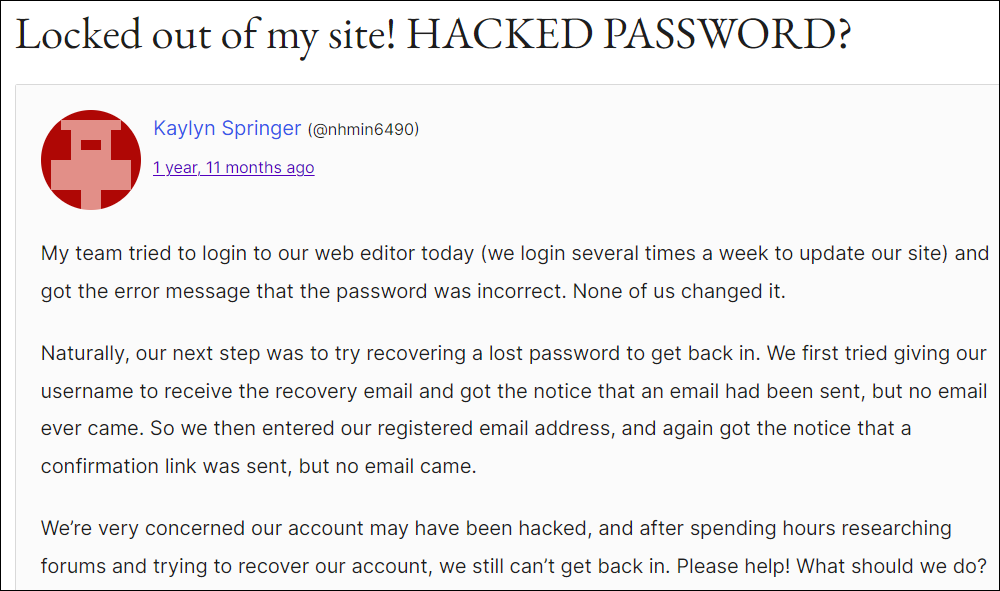
Hackers are even using sophisticated phishing scams and sending emails that impersonate the WordPress Security Team to try and get WordPress users to install malware on their sites via plugins.
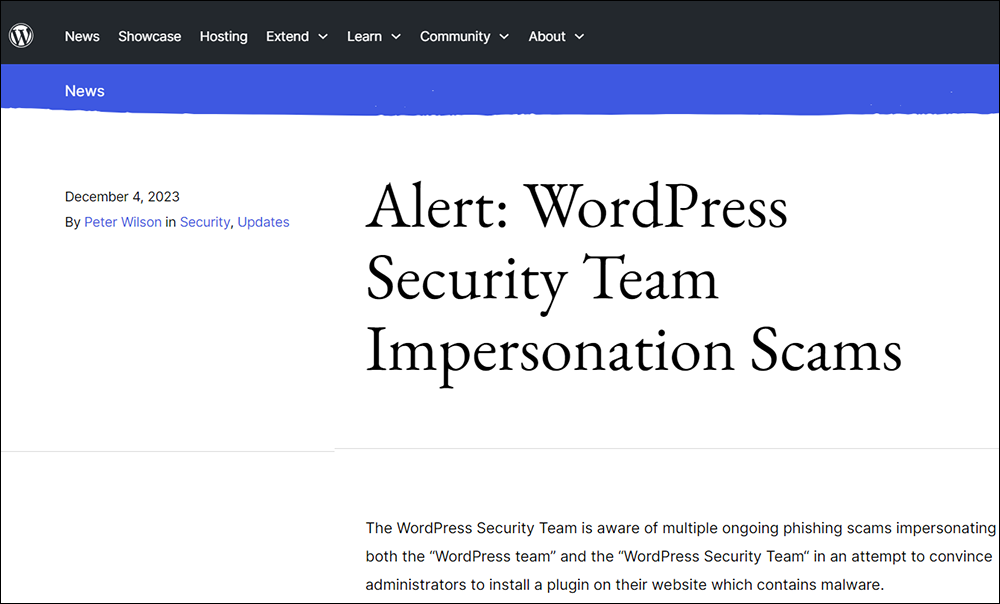
Why do they do this?
Hackers love a challenge. They love the opportunity of being able to brag to their peers about their skills and exploits.
Unless you are actively maintaining and monitoring your site, you may not be aware that these automated bots are currently trying to break into your WordPress site right now, at this very moment.
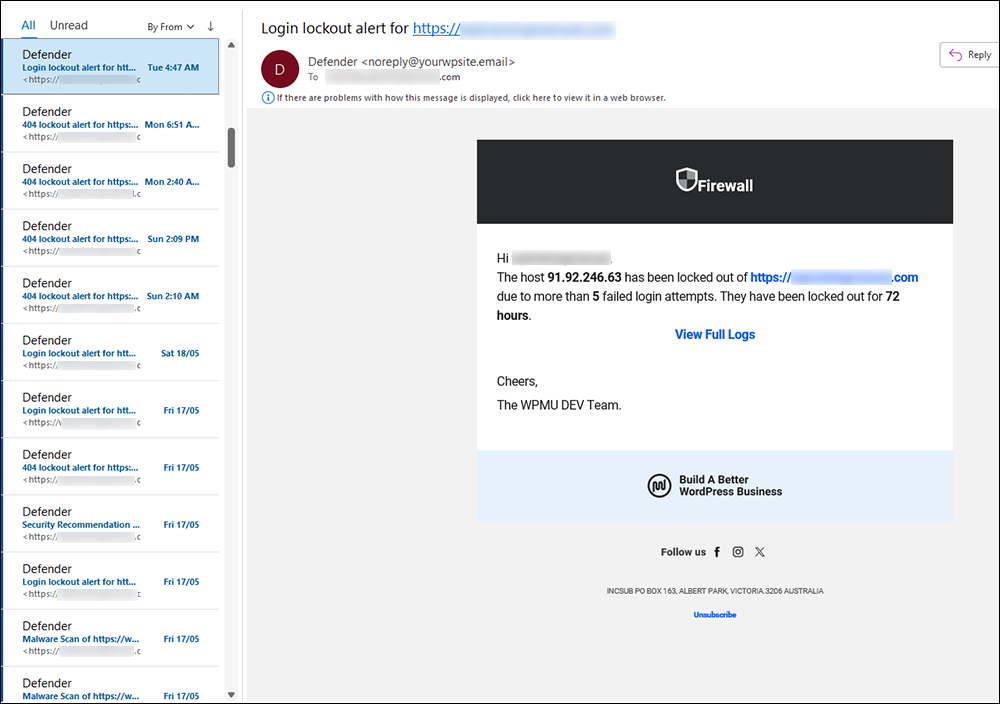
While WordPress itself is a relatively secure platform, as more new plugins are developed to extend the functionality of the platform, adding new capabilities to your site via plugins increases the potential for vulnerabilities and create openings for hackers to exploit.
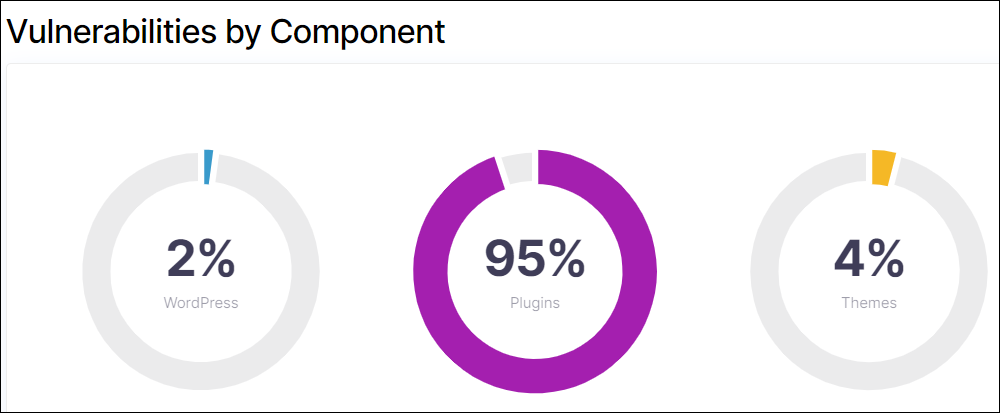
Considering that the number of vulnerabilities affecting WordPress sites is also increasing each year, keeping your site protected from potential malicious attacks due to exploitation of vulnerabilities by hackers becomes ever so more important.
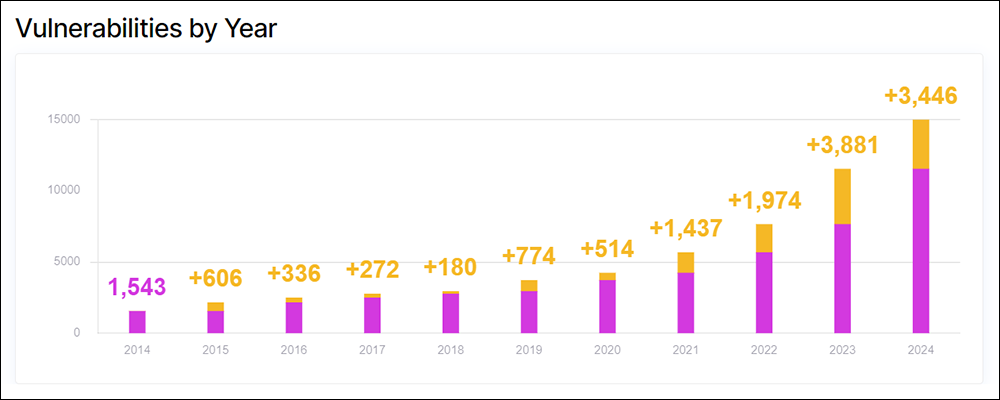
Effective WordPress site maintenance involves using tools and performing security scans that help to keep your site protected 24/7 against malicious attacks.

Thankfully, the WordPress community comprises of thousands of developers and users who are actively monitoring the software for bugs and reporting security issues and vulnerabilities in plugins, themes, and in the WordPress core software itself.
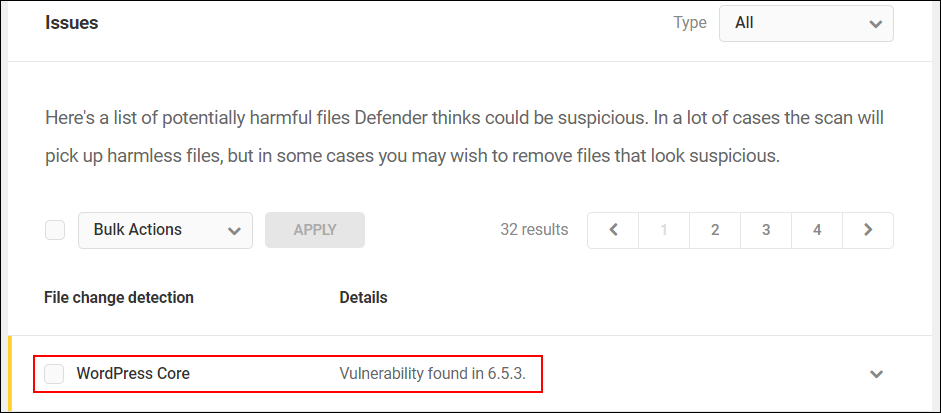
All of this effort, however, is no good to you, unless you are regularly keeping your WordPress installation software, plugins, and themes updated to protect your site from having these vulnerabilities be exploited by hackers.
Maintenance Issue #4 – Troubleshooting Common WordPress Problems & Errors
WordPress security is not the only area addressed by implementing a regular WordPress site maintenance routine.
You can also expect for your site to run into issues and problems that will need troubleshooting if updates or software installations go wrong.
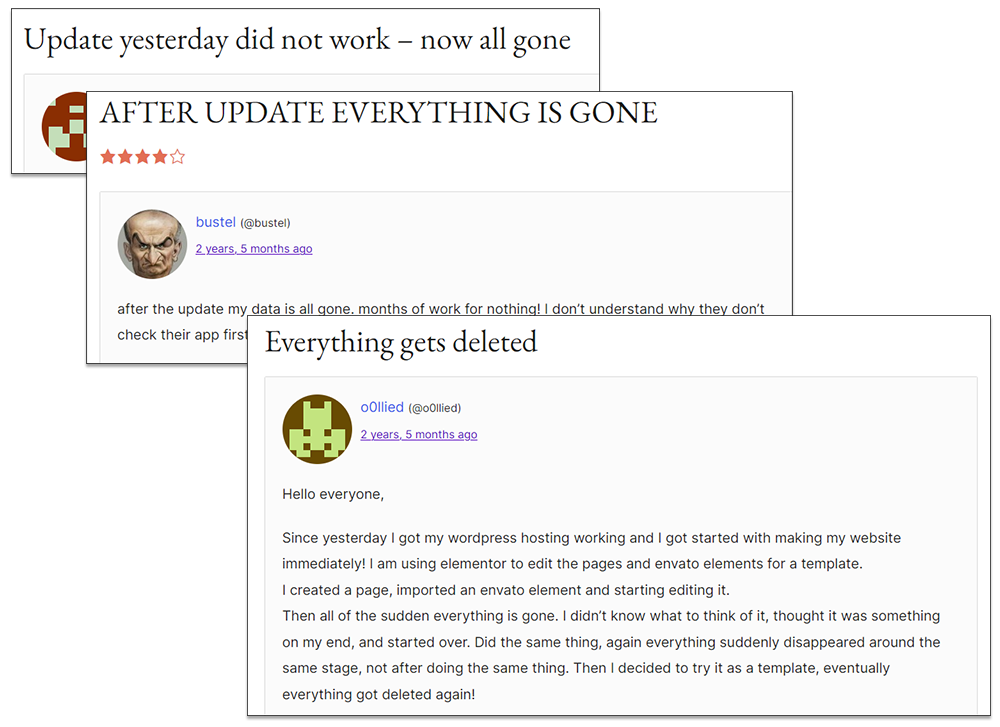
Like with all software, you should expect to run into occasional problems. WordPress Troubleshooting should also be an important part of your regular WordPress site maintenance.
Some issues are easy and quick to fix, while others may require technical skills, knowledge, and experience to identify and resolve.
See these tutorials if you need help troubleshooting and fixing problems on your WordPress site (or consult your WordPress developer): WordPress Troubleshooting
Maintenance Issue #5 – Restoring Your Website Files / Reinstalling Your WordPress Site
Earlier we talked about static vs dynamic websites. The WordPress platform generates dynamic websites using PHP and a database.
This means that WordPress not only requires you to back up all of your site’s installation and core files in case you ever need to restore or reinstall your site…
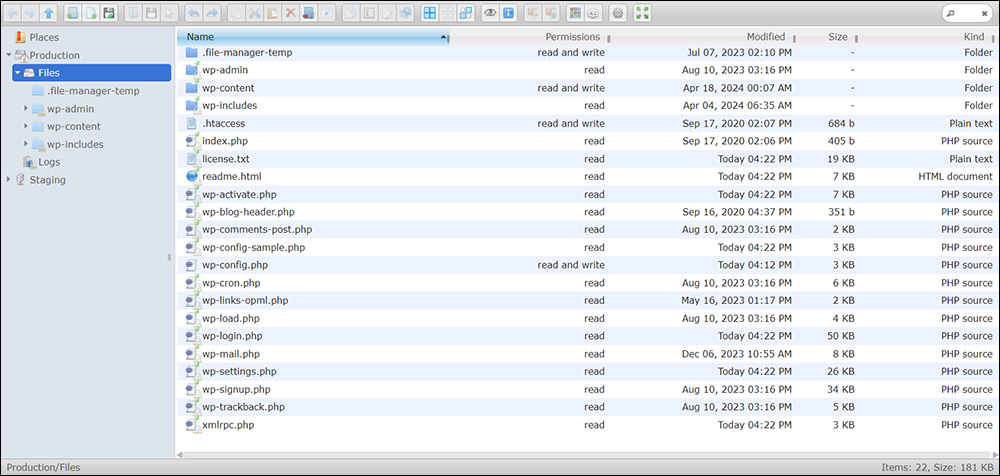
But since WordPress stores all of your site’s data in a database, your site’s database also needs to be regularly backed up, sometimes on a daily or even hourly basis, as it includes all of your site’s content (i.e. all the information in your posts, pages, comments, categories, settings, etc.).
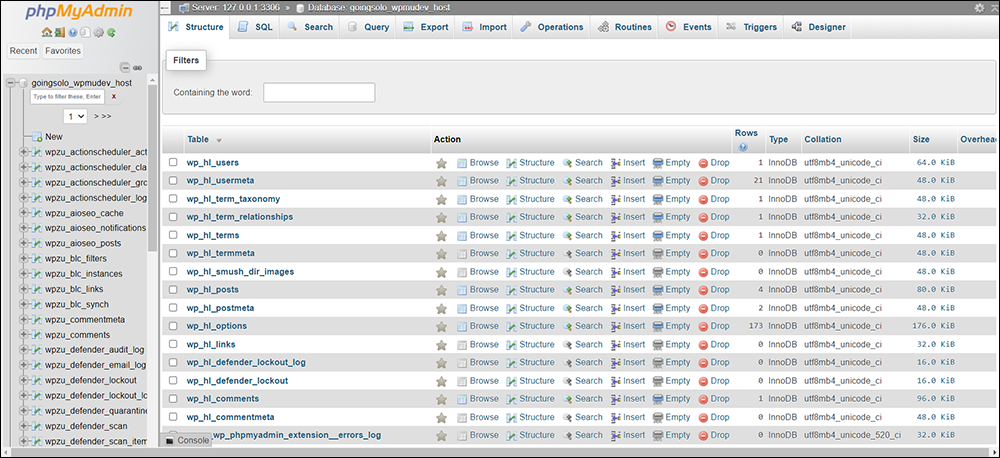
This area is covered in more detail further below.
Maintenance Issue #6 – Preventing Loss Of Valuable Data
Last, but not least, you should keep in mind that MySQL databases can and often do fail …
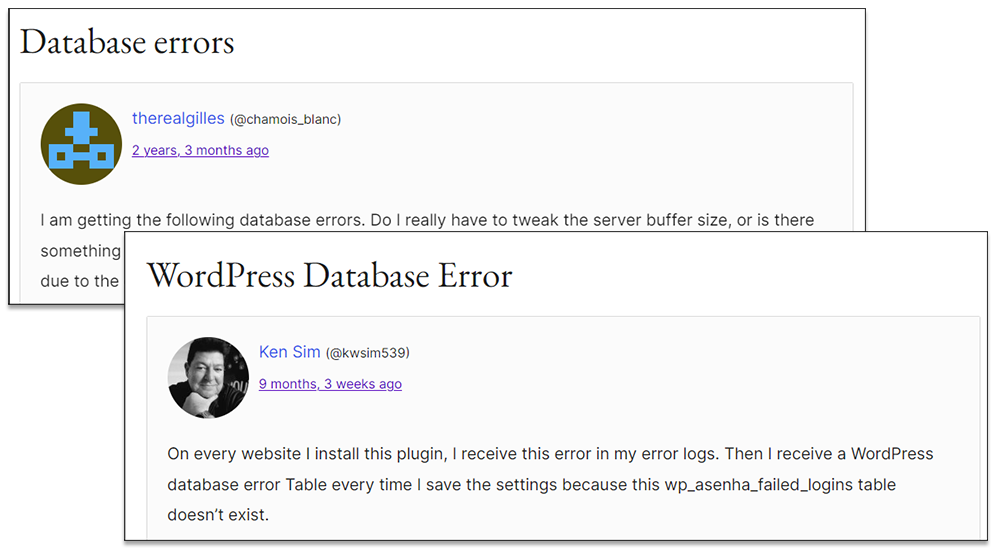
These issues these need to be resolved quickly, as WordPress database errors can affect your content and cause your site to become unreachable.
As you can see, maintaining a WordPress site regularly updated, backed up, and fully protected requires a lot more work than maintaining a regular static website.
Why Is WordPress Maintenance Important? Video Summary
The video below provides a summary of the importance of performing WordPress maintenance on a regular basis covered above.
Key WordPress Maintenance Services And Benefits
Maintaining your WordPress site is crucial for ensuring its performance, security, and relevance.
Here are some of key maintenance services you should perform on a regular basis to keep your WordPress site running at its best and how they benefit your business.
Updating WordPress Core, Plugins, and Themes
Regularly update your WordPress core software, plugins, and themes. Keeping your site up-to-date ensures you have the latest features and security patches, preventing vulnerabilities that hackers might exploit. This keeps your site secure and running smoothly.
- Importance: Keeps your site secure and compatible with the latest web standards.
- Benefits: Prevents vulnerabilities and ensures optimal performance.
Removing Spam Comments
Remove spam comments. Spam can clutter your site, making it less attractive to visitors and potentially harming your SEO. By keeping your comment sections clean, you will enhance user experience and maintain your site’s integrity.
- Importance: Maintains site cleanliness and integrity.
- Benefits: Enhances user experience and prevents spam from affecting SEO.
Optimizing WordPress Database
Optimize your WordPress database. Over time, your database can accumulate unnecessary data, slowing down your site. Regular optimization keeps your database lean and efficient, improving site speed and performance.
- Importance: Keeps your database clean and efficient.
- Benefits: Improves site speed and performance by removing unnecessary data.
Site Security Reviews
Regular site security reviews are essential. Conduct thorough checks to identify and fix potential security threats. This proactive approach helps protect your site from attacks and data breaches, safeguarding your business and customer information.
- Importance: Identifies and fixes potential security threats.
- Benefits: Protects your site from hacks and data breaches.
Site Backups
Site backups are a critical part of your maintenance services. In case of data loss or a site crash, having up-to-date backups ensures you can quickly restore your site with minimal downtime, providing peace of mind and business continuity.
- Importance: Ensures you can restore your site in case of data loss.
- Benefits: Provides peace of mind and quick recovery from issues.
Site Optimization
Site optimization enhances your site’s overall performance. Faster load times improve user experience and can boost your search engine rankings, driving more traffic to your site and keeping visitors engaged.
- Importance: Enhances overall site performance.
- Benefits: Faster load times lead to better user experience and higher search engine rankings.
Fixing Broken Links
Regularly check and fix broken links. Broken links can frustrate users and negatively impact your SEO. By ensuring all links are functional, you will improve site navigation and maintain a seamless user experience.
- Importance: Maintains site integrity and user navigation.
- Benefits: Improves SEO and prevents user frustration.
Updating Content
Keeping your content fresh and relevant is crucial. Update outdated content to ensure your site remains engaging and informative, which helps attract and retain visitors, supporting your business goals.
- Importance: Keeps your site relevant and engaging.
- Benefits: Attracts and retains visitors, supporting your business goals.
Improving SEO
Improving SEO enhances your site’s visibility in search engine results, driving more organic traffic to your site. Better SEO translates to increased visibility and potential customer reach.
- Importance: Enhances your site’s visibility in search engines.
- Benefits: Drives more organic traffic to your site.
Troubleshooting and Fixing Errors
Ensuring your site runs smoothly without any issues minimizes downtime and provides a seamless experience for your users.
- Importance: Ensures your site runs smoothly without issues.
- Benefits: Minimizes downtime and provides a seamless user experience.
By performing these key maintenance services regularly, you will ensure that your WordPress site remains secure, efficient, and up-to-date, ultimately supporting your business growth and providing an optimal experience for your users.
The WordPress Maintenance Process – Overview
A WordPress site maintenance routine should follow a specific sequence of steps to save time and help you avoid problems.
For example …
If you update your WordPress plugins before updating your WordPress installation, your new plugin versions may conflict and cause problems with the older WordPress installation.
But …
If you update your WordPress installation before backing up your WordPress database and something goes wrong, you may have to restore your data or completely reinstall your site.
However …
You should not back up your WordPress database before cleaning up and optimizing your WordPress data, as unnecessary data not only increases your database size, but it can also cause errors when re-importing data.
As you can see, it’s important to have a well thought out and effective system in place for performing regular WordPress maintenance tasks to avoid problems.
This also applies to other areas of WordPress site maintenance. For example, you will want to create an organized system for storing backups and retrieving older plugins or previous installation files in case you experience problems and need to troubleshoot errors on your site.
WordPress Maintenance Process – Flowchart
To complete your WordPress site maintenance routine as efficient and effectively as possible, we recommend designing a maintenance workflow for your organization similar to the process shown below.
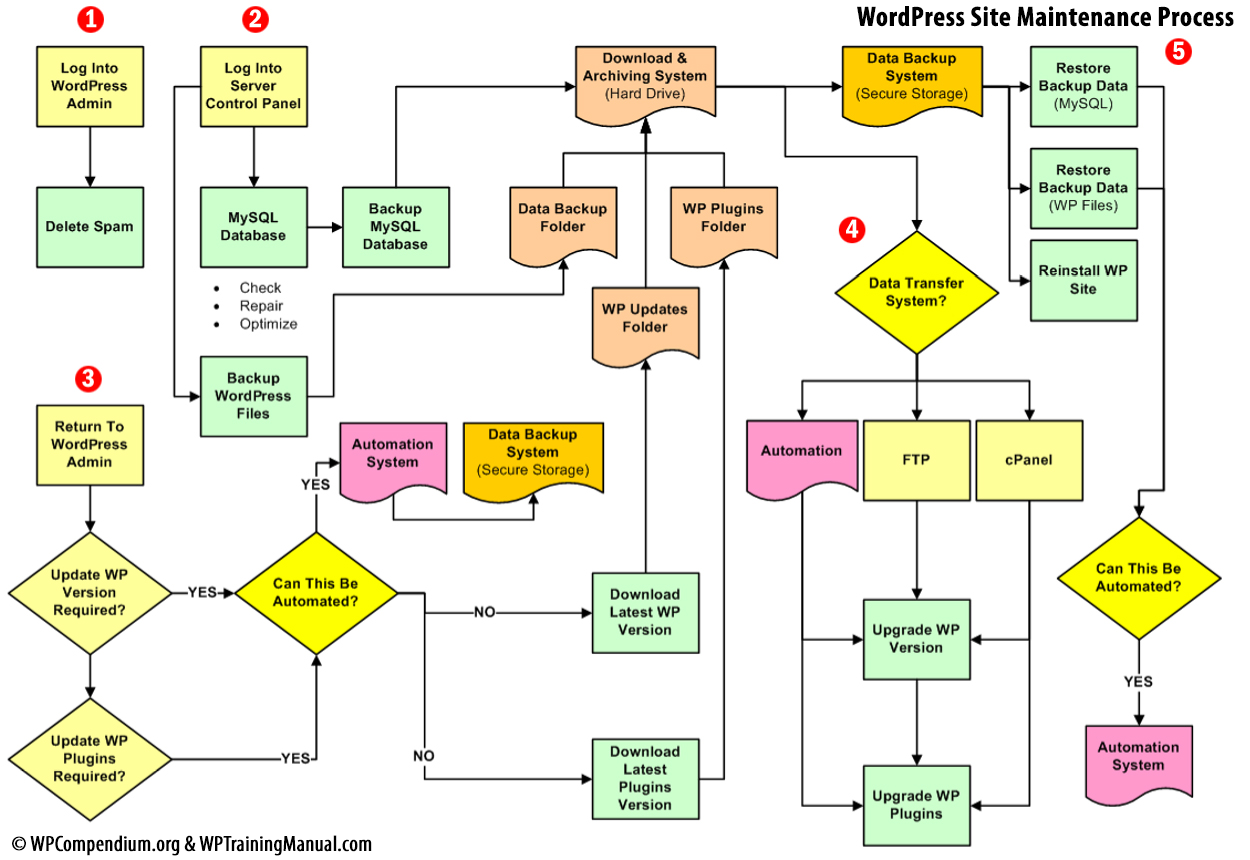
![]()
The above may look complicated and time-consuming, but it’s not!
Keep in mind this:
- The overall site maintenance system only needs to be set up once.
- Many aspects of the WordPress maintenance process can be automated using inexpensive plugins and/or services.
After performing the maintenance routine a few times (follow the WordPress Maintenance Checklist provided in the resources section and further below), keeping your WordPress site fully maintained, up-to-date, secure, and protected should take you very little time … usually no more than 30 – 60 minutes each month.
WordPress Site Maintenance Process – Main Components
As shown in the flowchart above, here are the main areas your effective WordPress Site Maintenance process should include:
- Removing/deleting unnecessary data from your site (e.g. comment SPAM)
- Backing up all data and files before performing any updates
- Checking to see if any updates are required
- Updating WordPress core software, plugins and themes to their latest versions
- Restoring / reinstalling data if required
Additional maintenance tasks may include:
- Updating content
- Fixing broken links in the content
- Optimizing the site to improve page loading speed
- Addressing security issues
- Troubleshooting errors
Let’s go briefly over each of these areas. For additional tutorials, refer to the links in the WordPress Maintenance Checklist provided further below:
1) Remove Unnecessary Data From Your WordPress Site
Before backing up your WordPress data, it’s a good idea to first delete anything that is unnecessary on your site. This could include Comment Spam, inactive plugins, obsolete posts, etc …
Deleting unnecessary data from your site before backing up your MySQL database not only helps to reduce your backup file size but more importantly, if you have to restore your data later, you won’t be re-importing things like spam and other unwanted data into your site.
2) Back Up All Data And Files
After removing all unwanted data from your site, the next step is to back up both your MySQL database and your WordPress files before performing upgrades. This step is important, as it will allow you to restore your data or reinstall your site if any errors occur after upgrading your site or plugins.
Even if no components of your site need to be updated or upgraded, it is still important to complete this step. Performing regular file and data backups is all part of having an effective site maintenance program.
There are automated methods you can use to perform WordPress site backups. There are also ways to perform manual backups if your server or hosting configuration doesn’t allow you to automate these tasks or if you need to be absolutely sure that your data and files have been properly backed up (automation can fail).
3) Check To See If Updates Are Required
After completing Step 2, the next step is to go through your site and check if you need to upgrade your WordPress site, plugins, or themes to the latest version.
Part of this process may involve making a decision not to upgrade your site or a particular plugin or theme to their latest version just yet. Sometimes, its good to wait for a day or a week before updating to allow any new bugs, conflicts, or vulnerabilities in the newer versions to be discovered, addressed, and fixed.
4) Update Site Components
After establishing that your site and/or plugins and themes need to be updated, the next step is to then go ahead and perform the actual updates.
It’s important to keep your WordPress software, plugins, and themes updated to their latest version. This helps to ensure a conflict-free and error-free site and that everything keeps running smoothly.
There are are various automated methods you can use to perform WordPress updates, including using WordPress plugins and third-party services. It’s also important to know how to perform manual updates if your server or hosting configuration doesn’t allow you to automate certain tasks, or if you prefer to do things manually.
5) Restore / Reinstall Site Data (If Required)
Sometimes things go wrong and you may need to restore some or all of your data, or even reinstall your site completely.
Knowing how to restore or reinstall your site is also useful if you are migrating your site to another location, domain or web server (e.g. changing web hosting providers).
WordPress Maintenance Process Overview – Video Summary
The video below provides a summary of the WordPress Maintenance process described above.
***
Additional WordPress Site Maintenance Tasks
In addition to performing the essential maintenance tasks described above, there are some other tasks you may want to include in your site maintenance routine.
For example:
Monitor uptime and performance
Monitoring uptime ensures that your website remains accessible to users at all times, and helps to identify and resolve slow loading times.
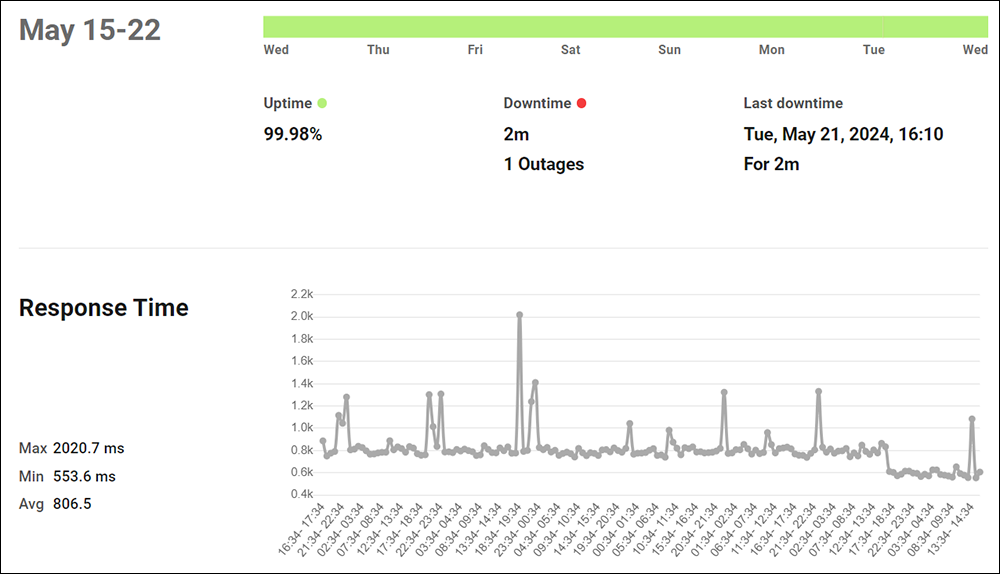
Check for security issues
Regularly checking for security issues helps protect your site from hacks, malware, and vulnerabilities. Keeping your site secure is crucial to maintaining user trust and preventing data breaches.

Scan for broken links
Broken links can frustrate users and harm your site’s SEO. Regularly scanning for and fixing broken links ensures a smooth user experience and helps maintain your website’s credibility and search engine rankings.
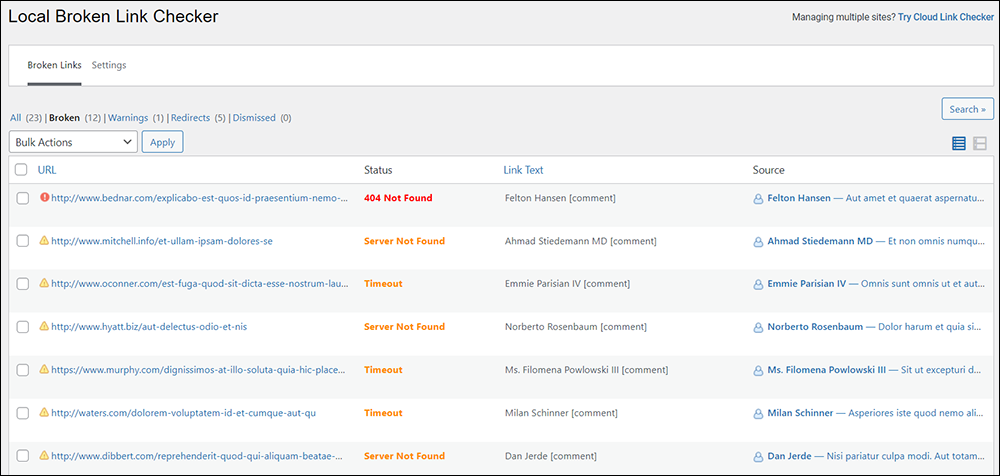
Update content
Updating content keeps your website relevant and engaging for visitors. Fresh, accurate content can improve your SEO rankings and provide value to your audience, encouraging them to return to your site.
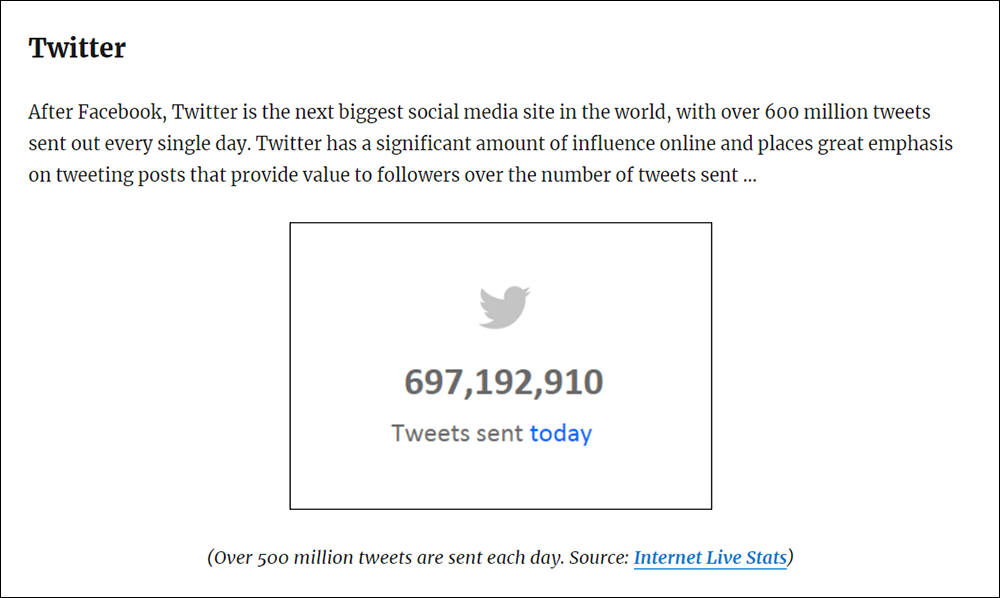
Check and renew licenses
Ensuring that all your plugins, themes, and other software licenses are current helps maintain vital functionality and security.
Expired licenses can lead to missing functionalities, vulnerabilities, and compatibility issues.
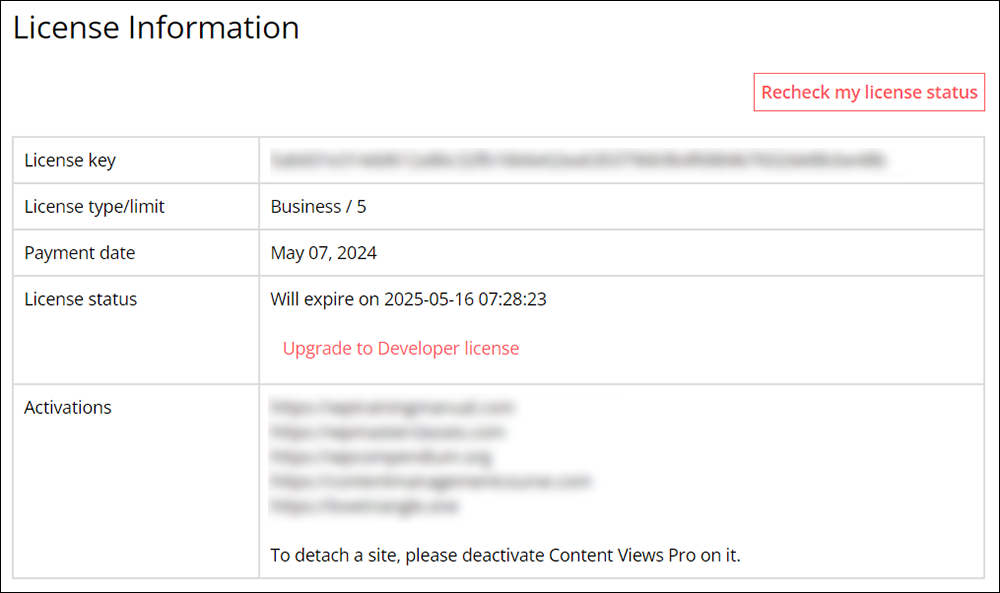
This also applies to domain registrations, memberships, and other important subscription services.

Review site analytics
Reviewing site analytics on a regular basis as part of your site maintenance process can provide valuable insights into user behavior, traffic sources, and content performance.
This data can help you make informed decisions to improve your website’s effectiveness and user engagement.
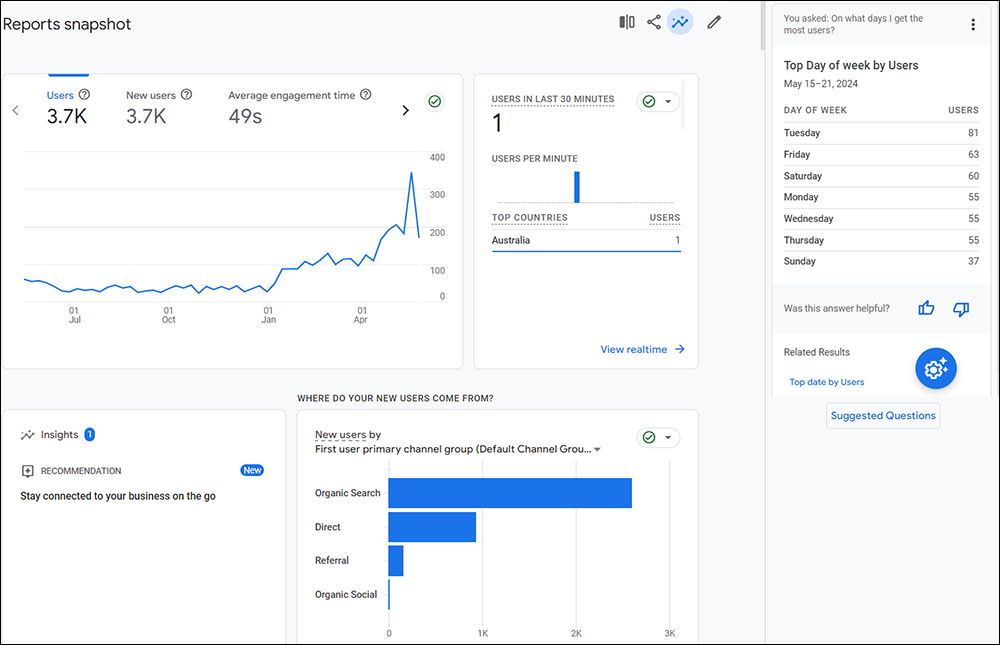
For example, some of the metrics you can use and areas of improvement you can address by reviewing analytics reports include:
- User Engagement
- Metrics: Bounce Rate, Average Session Duration, Pages per Session
- Improvement Areas: Identify pages with high bounce rates and low session durations to improve content and design for better user retention and engagement.
- Traffic Sources
- Metrics: Source/Medium Report, Referral Report
- Improvement Areas: Determine which channels drive the most traffic and focus marketing efforts on the most effective ones. Optimize underperforming channels to increase traffic.
- Content Performance
- Metrics: Top Pages Report, Landing Pages Report
- Improvement Areas: Analyze which content is most popular and engaging. Create more of what works and update or remove underperforming content.
- SEO and Search Performance
- Metrics: Search Console Report, Organic Search Report
- Improvement Areas: Identify keywords driving traffic and optimize content for those keywords. Address issues like low click-through rates and high impressions with low clicks.
- User Demographics and Behavior
- Metrics: Audience Demographics Report, User Flow Report
- Improvement Areas: Understand the demographics of your audience and how they navigate your site. Tailor content and marketing strategies to better meet the needs and interests of your target audience.
- Site Speed and Performance
- Metrics: Site Speed Report
- Improvement Areas: Identify slow-loading pages and work on optimizing their load times to improve user experience and SEO rankings.
- Conversions and Goals
- Metrics: Goal Completions, Conversion Rates
- Improvement Areas: Track how well your site is achieving its objectives (e.g., sales, sign-ups). Optimize call-to-actions and conversion funnels to improve conversion.
- Device Performance
- Metrics: Device Breakdown Report
- Improvement Areas: Ensure your site is performing well across different devices (desktop, mobile, tablet). Optimize for the most used devices and address any issues specific to certain device types.
WordPress Maintenance Mode
WordPress Maintenance Mode is a valuable feature that temporarily takes your site offline or displays a maintenance page to visitors while you perform updates or other essential tasks.
When to Use WordPress Maintenance Mode
Maintenance mode lets you make necessary changes to your site without disrupting the user experience or presenting incomplete content to your visitors.
Use WordPress Maintenance Mode for tasks such as:
- Updating the WordPress Core
- Updating Themes and Plugins
- Redesigning or Overhauling Your Website
- Fixing Technical Issues
- Updating Content
- Adding New Features
Enabling Maintenance Mode in WordPress
WordPress automatically goes into maintenance mode when you perform updates to the core software, plugins, and themes.
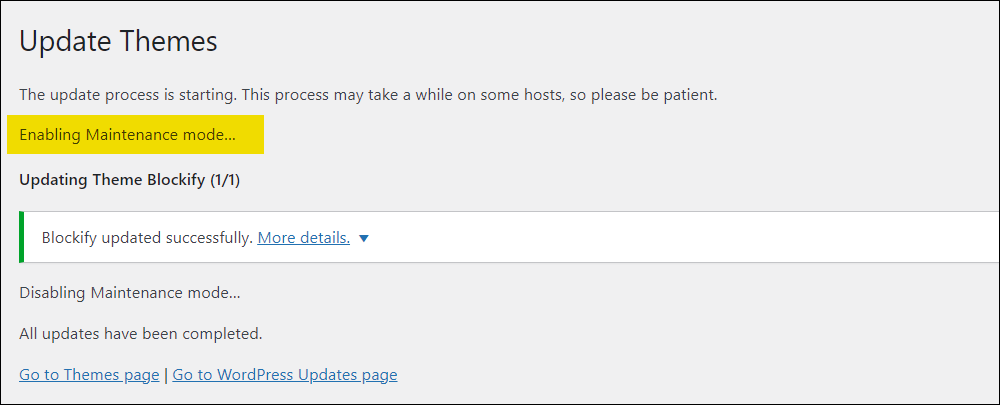
While updates are processing, WordPress automatically makes your site briefly unavailable to visitors and displays a default maintenance message to your site visitors (“Briefly unavailable for scheduled maintenance. Check back in a minute.”).
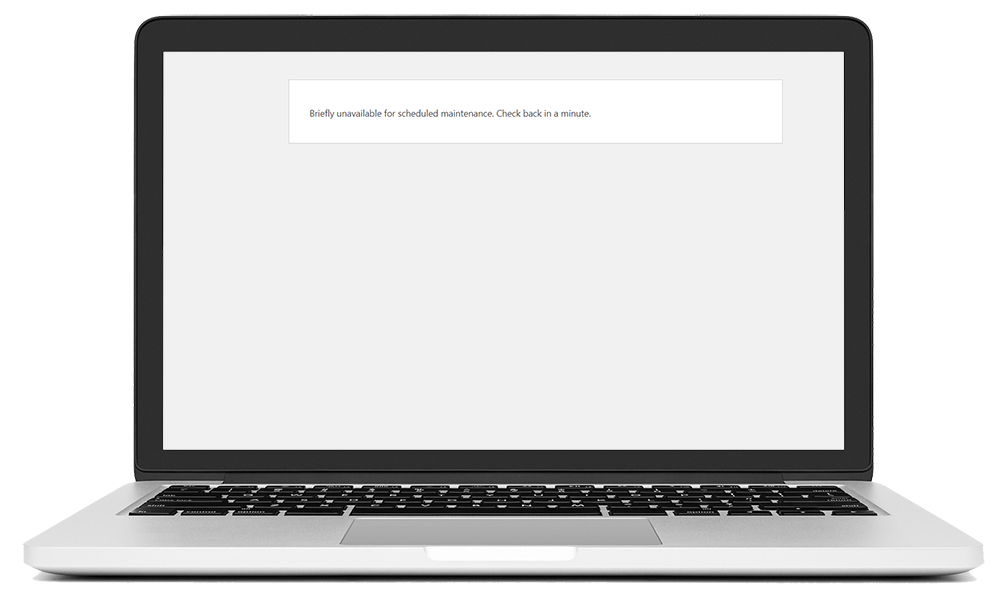
You can opt to use a maintenance mode plugin to inform users that updates are in progress and the site will be back soon.
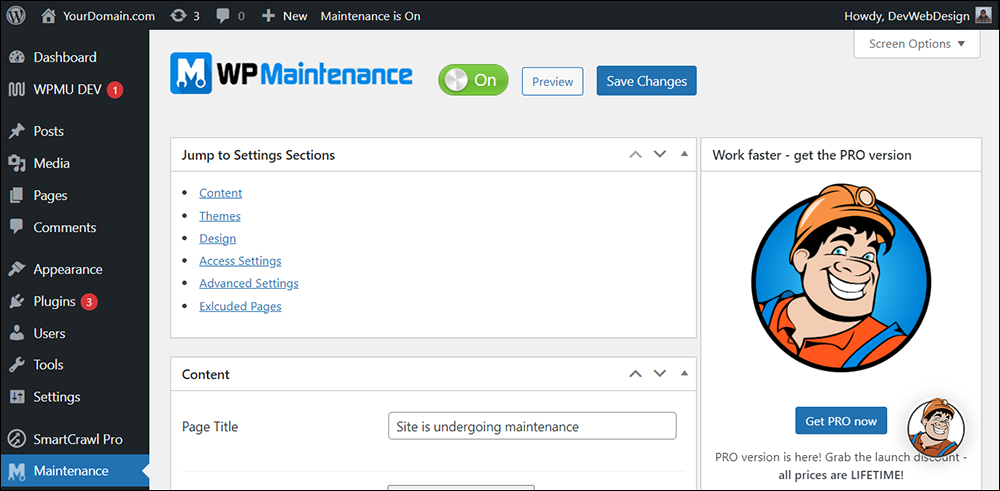
Using a WordPress maintenance mode plugin offers several key benefits, such as providing a better user experience for your visitors, maintaining professionalism by displaying a custom maintenance page with your branding, and limiting access to sensitive areas of your website while you perform essential maintenance tasks.
Most maintenance mode plugins can be activated with just a few clicks without needing to manually edit files or code and offer customizable options for the maintenance page, such as adding custom messages, background images, countdown timers to keep visitors informed and engaged, and even options to collect email addresses for notifications.
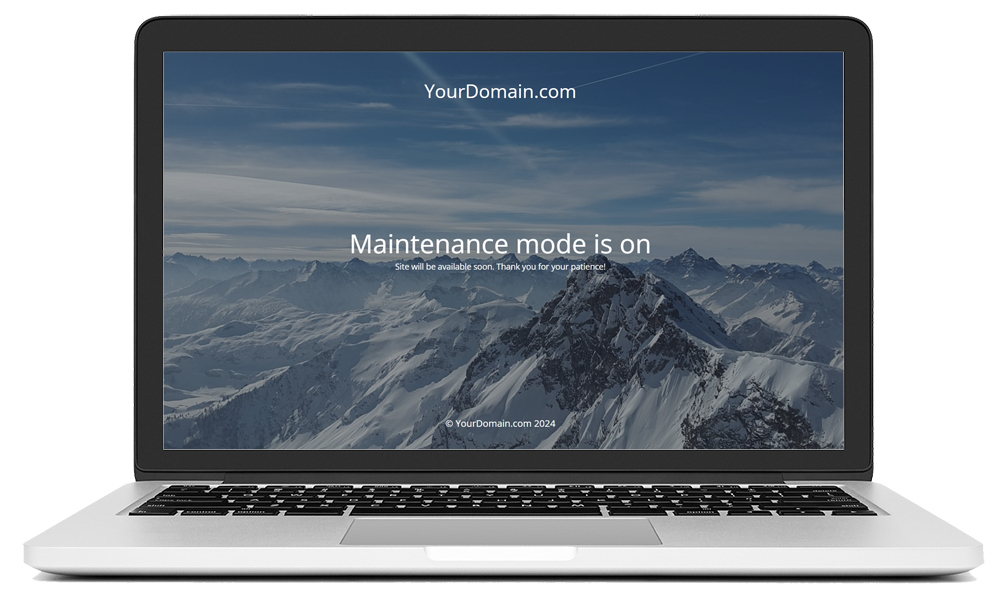
Activating WordPress maintenance mode is a crucial best practice to keep your site professional and user-friendly during updates.
For more information and a list of popular maintenance mode plugins, see this tutorial: How To Put Your WordPress Site On Maintenance Mode
Note: Sometimes, WordPress can get stuck in maintenance mode. To learn how to troubleshoot and fix this issue, refer to the list of troubleshooting tutorials further below.
Periodic WordPress Maintenance Schedule
Another important factor to consider when putting together an effective WordPress site maintenance process is how routinely you should be performing each task.
Every business will have different needs or preferences when it comes to creating a maintenance schedule.
Here is a suggested template you can follow to develop your own WordPress site maintenance plan:
Daily Maintenance Tasks
- Monitor Uptime and Performance: Ensure your site is always accessible to users and loading quickly. Use automated tools to monitor uptime and receive alerts for any downtime.
- Backup Website: Automate daily backups to prevent data loss and store these offsite to safeguard your data.
- Vulnerability Scanning: Scan for malware, vulnerabilities and infected files using security plugins to prevent attacks.
- Review site analytics: Monitor traffic and user behavior for any irregularities.
Weekly Maintenance Tasks
- Update WordPress Core, Plugins, and Themes: Regularly update all components to the latest versions to maintain security and functionality.
- Update Widgets: Ensure all widgets are current to keep your site functioning smoothly.
- Empty Cache: Clear your site’s cache periodically to improve performance and load times.
- Review and Address Security Alerts: Check for any security notifications and take necessary actions.
Monthly Maintenance Tasks
- Moderate Comments: Review and delete comments to maintain site integrity and keep your site clean and spam-free.
- Update Content: Refresh outdated content and add new content to keep your site relevant.
- Test Website Functionality: Check links and interactive elements for proper operation.
- Remove Broken Links: Use a plugin to identify and fix broken links to enhance user experience and SEO.
- Replace Broken Images: Regularly check for and fix any broken image links to maintain visual integrity.
- Remove Unused Themes and Plugins: Delete unnecessary themes and plugins to improve site security and performance.
- Check Google PageSpeed Score: Use PageSpeed Insights to evaluate and optimize site performance. Use tools to assess and improve your site’s loading times.
- Test for Browser and Device Compatibility: Ensure your site works well on various devices and browsers using Chrome’s Device Mode.
- Fix 404 Errors: Identify and redirect 404 errors using Google Search Console to improve user experience.
- Fix PHP Errors: Enable debug mode or use PHP monitoring tools to identify and resolve PHP errors.
- Test Contact Forms: Regularly test forms to ensure they are functioning and sending emails correctly.
- Perform a Full Site Backup: Ensure you have a complete and up-to-date backup of your site.
Quarterly Maintenance Tasks
- Change WordPress Credentials: Update passwords for all WordPress accounts to enhance security.
- Review User Roles and Permissions: Ensure that all user roles are assigned correctly and have appropriate permissions.
- Remove Unnecessary WordPress Users: Delete inactive and unnecessary user accounts to maintain security.
- Check Image Alt Texts: Ensure all images have alt texts for accessibility and SEO purposes.
- Check Premium Licenses Expiry Date and Renew: Monitor the expiry dates of premium plugin and theme licenses to maintain functionality. Ensure all plugins and themes are properly licensed and up-to-date.
- Review WordPress Security Logs: Keep track of significant changes and potential security breaches using security logs.
- Optimize WordPress Database: Use plugins or phpMyAdmin to clean up and optimize your database for better performance.
- Check Site’s RSS Feeds: Ensure RSS feeds are functioning correctly to keep subscribers updated.
- Empty Media Library: Delete unused media files and optimize images to save space and improve performance.
Yearly Maintenance Tasks
- Audit Content and Optimize for SEO: Review and update content using Google Search Console and Analytics data to improve SEO.
- Disavow Toxic Links: Identify and disavow backlinks from toxic sites to protect SEO rankings.
- Review About Us Page and Copyright: Update copyright information and review the About Us page for accuracy and trustworthiness.
WordPress Site Maintenance Checklist
Using a WordPress maintenance checklist is essential for ensuring the smooth and secure operation of your website.
Regular maintenance helps prevent security vulnerabilities, improves site performance, and ensures all plugins and themes are up-to-date.
By systematically following a checklist, you can proactively address potential issues before they escalate, enhance user experience, and maintain optimal functionality. Additionally, a structured maintenance routine supports SEO efforts by keeping your content fresh and your website running efficiently, ultimately contributing to higher search engine rankings and better user retention
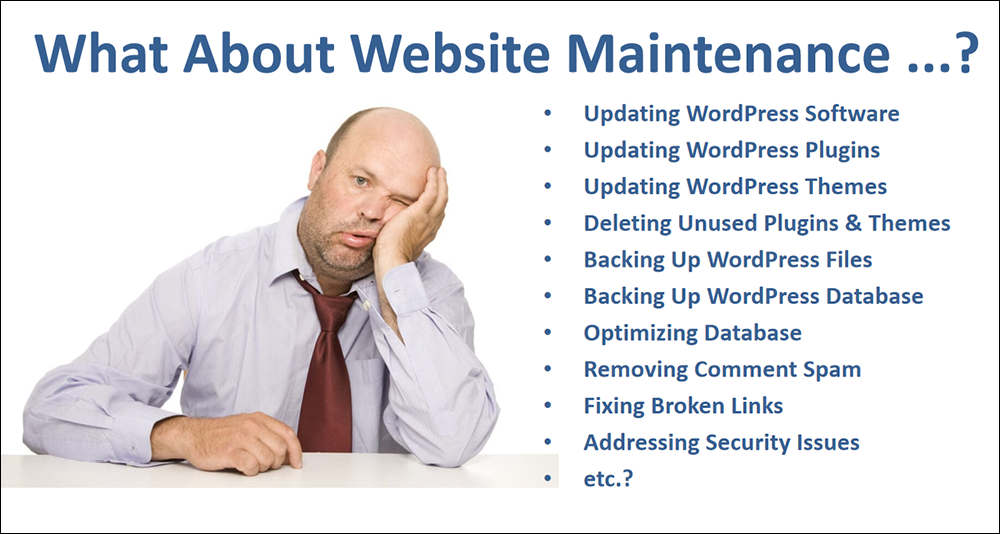
Use the checklist below to ensure a complete and effective WordPress site maintenance routine.
| Maintenance Step | Comments | Tutorials | |
|---|---|---|---|
| Have access to all records and details (logins, passwords, registrant contact details, renewal dates, etc.): | ||
| Log into your WordPress site | ||
| Go to your dashboard | ||
| Check if WordPress version, plugins, or themes need updating | Don't do this until you backup your site! | |
| Check & repair broken links | Don't do this until you backup your site! | |
| Delete comment SPAM | Don't add SPAM to your backup files | |
| Delete unnecessary/unused media files | Do this regularly (e.g. every few months) | |
| Log into your hosting account | Ignore this step if using automated backup tools. | |
| Optimize and back up your WordPress database | Ignore this step if using automated backup tools. | |
| Backup your WordPress files | If not using automated backup tools, zip the folder containing both the WordPress files and the SQL data file. | |
| Upload backup files to secure offline storage account | Ignore this step if using automated backup tools. | |
| Go back into your WordPress Admin | ||
| Put your site in Maintenance Mode | Display a maintenance page to visitors while you perform updates, changes, and other maintenance tasks | |
| Update WordPress to latest version | Only if update is required. If automated method doesn't work, use manual method instead. | |
| Update your WordPress plugins (deactivate/remove unused plugins) | Only if update is required. If automated method doesn't work, use manual method instead. | |
| Update your WordPress theme(s) (remove unused themes) | Only if update is required. If automated method doesn't work, use manual method instead. | |
| Review site reports | ||
| Perform any additional maitenance work required: | ||
| Generate any required reports: | ||
| Log out of your WordPress site. | ||
| Test and review site to make sure everything is working ok. | ||
| Your WordPress site maintenance is done. | ||
| Errors or Problems? Try this ... | |||
| Troubleshoot WordPress Errors | (If required) | |
| Restore WordPress Data | (If required) | |
| Reinstall WordPress Site | (If required) |
WordPress Troubleshooting
Performing regular troubleshooting as part of WordPress maintenance is crucial for ensuring your website’s reliability, security, and optimal performance.
By systematically identifying and resolving issues, you can prevent minor problems from escalating into major disruptions that could impact user experience and business operations.
Routine troubleshooting helps to maintain website uptime, protect against security vulnerabilities, and enhance overall functionality, which leads to higher user trust and engagement. Additionally, proactive troubleshooting supports consistent website performance, contributing to better SEO rankings and providing a seamless experience for visitors
If you are experiencing issues with your WordPress site, use the tutorials below to troubleshoot and fix common WordPress errors.
| WordPress Issue | Description |
|---|---|
| How To Fix Can’t Change WordPress Website Address – Greyed Out URLs | Are your WordPress Address (URL) and WordPress Site Address (URL) greyed out? This step-by-step tutorial shows you how to fix this issue. |
| How To Fix The WordPress White Screen Of Death Error | Is your WordPress screen blank? This tutorial explains how to troubleshoot and fix the WordPress white screen of death error. |
| How To Fix WordPress Stuck On “Briefly Unavailable For Scheduled Maintenance” Error | Is your WordPress site stuck with a "Briefly unavailable for scheduled maintenance" error message? This step-by-step tutorial shows you how to fix this. |
| How To Fix WordPress 403 Forbidden Error | Are you getting a 403 Forbidden error message on your WordPress site? This tutorial shows you how to troubleshoot and fix this issue. |
| How To Fix The WordPress Posts Returning 404 Not Found Error | Are you getting a 404 Not Found error message when clicking to an existing page on your site? Learn how to fix the WordPress 404 Not Found error. |
| How To Fix A 500 Internal Server Error In WordPress | Is your WordPress site displaying a "500 Internal Server" error? This tutorial shows you how to troubleshoot and fix this issue. |
| How To Fix WordPress Fatal Errors | Are you experiencing "Fatal Error" messages in WordPress? Here are some of the more common WordPress fatal errors you may come across and how to fix these. |
| How To Fix The WordPress ‘Are You Sure You Want To Do This?’ Error | Learn how to troubleshoot and fix the WordPress 'Are you sure you want to do this?' error in this tutorial. |
| How To Fix WordPress Error Establishing A Database Connection | Are you getting an "Error establishing a database connection" message on your site? This step-by-step tutorial will show you how to fix this WordPress issue. |
| How To Fix A Corrupted .htaccess File | Are your experiencing an internal server error or Forbidden 403 error on your WordPress site? You may need to fix a corrupt .htaccess file. This tutorial shows you how. |
| How To Fix The Page Isn’t Redirecting Properly Error In WordPress | Learn how to fix 'The page isn't redirecting properly' error in WordPress in this tutorial. |
| How To Fix WordPress Keeps Logging Out Problem | Do you keep getting logged out of WordPress? Learn how to fix the WordPress keeps logging out problem in this tutorial. |
| WordPress Troubleshooting: Unable To Log Into WordPress Administration | Learn what to do if you are unable to log into your WordPress Administration area. |
| How To Fix Problems Accessing Your WordPress Admin Area | Are you locked out of your WordPress admin area? Learn how to troubleshoot, identify & fix problems or errors preventing access to your WordPress admin area. |
| How To Fix WordPress Database Is Too Large To Back Up Issue | Is your WordPress database too large to back up? Here is some useful information that can help you solve this issue. |
| How To Increase WordPress File Upload Size | Are you having trouble uploading files to your WordPress Media Library? This tutorial explains how to increase your WordPress file upload size limit. |
| How To Tell What PHP Version Your Server Is Running | Learn how to quickly tell what version of PHP your server is using. |
| What Causes WordPress Errors? | Learn about some of the most common causes of WordPress errors and how to address these. |
| How To Detect And Repair Broken Links In WordPress | Managing broken links is an important part of website maintenance. In this tutorial, we show you how to find and fix broken links in WordPress. |
| How To Fix General WordPress Errors | Learn how to troubleshoot and fix general WordPress errors. |
| WordPress Plugin Troubleshooting Guide | Learn how to fix common WordPress Plugin errors in our WordPress Plugin Troubleshooting Guide. |
| WordPress Troubleshooting Guide | Learn how to troubleshoot and fix common WordPress errors using our WordPress Troubleshooting Guide. |
| Monitor Website Health From Your WordPress Dashboard | In this tutorial, we explore free WordPress plugins that can help you monitor your website's health from your WordPress dashboard. |
| WordPress Troubleshooting Tools | Learn about tools that can help you troubleshoot and fix problems, issues, and errors with your WordPress site. |
| WordPress Troubleshooting Help Resources | Need additional help fixing errors on your WordPress site? Here is a list of helpful WordPress troubleshooting help resources. |
WordPress Maintenance: In-House vs Outsourced
At this point, you should be thinking about things like:
“Should we create an implement our own WordPress maintenance plan in-house or outsource this to a web developer or digital agency (e.g. subscribe to a website care plan)?”
If you plan to do your website maintenance inhouse, asking these additional questions will help you to develop an effective maintenance plan for your organization:
- What specific tasks should be included in a comprehensive WordPress maintenance plan?
- How frequently should WordPress core, themes, and plugins be updated?
- What security measures should be implemented to protect the site from hackers?
- How often should backups be created, and where should they be stored?
- What steps are involved in optimizing website performance and speed?
- Who will monitor the site for uptime and security breaches?
- How should site analytics be monitored and reported?
- What procedures should be in place for regular content updates and SEO optimization?
- Who will be responsible for troubleshooting and fixing site issues promptly?
- What is the process for handling major updates or redesigns?
- How will user roles and permissions be managed to ensure site security?
- What is the protocol for regular database maintenance and optimization?
- Who will ensure that all third-party integrations (e.g., payment gateways, marketing tools) are functioning correctly?
- What key performance indicators (KPIs) will be use to measure the success of maintenance activities?
- How can maintenance tasks be assigned and tracked within a team?
- What tools and platforms are recommended for effective maintenance management?
- How will we train the team to handle basic maintenance tasks?
- What emergency procedures should be in place for site crashes or hacks?
- How will we keep up with the latest WordPress updates and best practices?
If you plan to outsource your site’s maintenance, asking these additional questions will help you to evaluate sourcing the help of an external web developer or agency’s website maintenance services or website care plan:
- What are the benefits of outsourcing WordPress maintenance to a professional service?
- How can we properly evaluate and select a reliable WordPress maintenance service provider?
- What should be included in a WordPress maintenance contract?
- How much should we expect to budget for WordPress maintenance services?
- What are the potential risks of not maintaining our WordPress site properly?
- How does outsourcing compare to in-house maintenance in terms of cost and efficiency?
- What services are typically covered by outsourced WordPress maintenance providers?
- How can outsourcing maintenance improve site security and performance?
- What are the common challenges faced when outsourcing WordPress maintenance, and how can they be mitigated?
- What level of communication and reporting should we expect from an outsourced maintenance provider?
- How can we ensure that outsourced maintenance aligns with our business goals and requirements?
- What steps should we take to transition my WordPress maintenance from in-house to an outsourced provider?
- Can we partially outsource maintenance while keeping some tasks in-house?
- What criteria should we use to determine whether to outsource or keep maintenance in-house?
- How will our customer inquiries and support requests be handled?
WordPress Website Maintenance: Common Concerns
Maintaining a WordPress website is crucial for ensuring its performance, security, and reliability. Keeping your website updated, secure, and optimized not only protects your business but also enhances user experience and boosts your online presence.
As a website owner, however, you might have various concerns about the necessity of regular maintenance.
Here are the most common concerns website owners have about WordPress site maintenance. Hopefully, these will help you understand the importance of keeping your WordPress site updated, secure, and optimized:
“I don’t see the need for regular maintenance.”
Regular maintenance ensures your website runs smoothly and securely. Just like a car, your website needs routine check-ups to prevent issues. By keeping everything updated, you can avoid potential security vulnerabilities and ensure optimal performance for your visitors.
“It’s too expensive.”
Investing in regular maintenance will save you money in the long run. Preventative maintenance helps to avoid costly issues such as hacks, data loss, and significant downtime, which can be far more expensive to resolve. If you plan to outsource your website maintenance, look for a service provider offering flexible pricing plans to suit different budgets, making it an affordable investment.
“I haven’t experienced any problems so far.”
If your site has been running smoothly, that’s great, but that doesn’t mean issues can’t or won’t arise. Regular maintenance helps identify and fix potential problems before they become major issues, ensuring your site remains stable and secure.
“I can handle updates and maintenance myself.”
While most website owners can manage basic tasks, it may be worth considering professional website maintenance services to ensure thorough and efficient handling of all your site’s updates and optimizations. Website maintenance experts will ensure that your site is maintained correctly, saving you time and reducing the risk of errors.
“I use security plugins for protection.”
Security plugins are a good start, but they are not foolproof. Regular maintenance includes not only comprehensive security checks, backups, and updates to ensure your entire site is protected, but also reviewing security logs and files to identify and address potential issues and security risks. This holistic approach provides a higher level of security than relying solely on plugins and requires experience and know-how.
“My site is too small to be targeted by hackers.”
Hackers target sites of all sizes. Small sites are often seen as easy targets because they might not have robust security measures in place. Regular maintenance ensures your site is secure, protecting your data and your visitors.
“I don’t have the time to manage this.”
Then we recommend outsourcing your website maintenance to professionals that offer a fully managed service and handle everything for you. Good maintenance service providers will send you regular notifications and reports, but you won’t need to actively monitor or manage the process, allowing you to focus on your core business activities.
“I’ve had a bad experience with a similar service.”
Look for maintenance providers that prioritize transparency, clear communication, and high-quality work. Start with a small project (e.g. their basic web care plan) to gauge their reliability and the value of their services.
“I’m worried about downtime during maintenance.”
Most professional services will schedule maintenance during off-peak hours to minimize any disruption to your site’s availability and will work efficiently to ensure that any necessary downtime is as short as possible to keep your site accessible to visitors.
“I don’t understand the technical details.”
Look for services that make their processes transparent and provide clear, easy-to-understand reports explaining their maintenance activities and benefits.
“What if something goes wrong during maintenance?”
You should always create backups before performing any maintenance tasks so if anything goes wrong, you can quickly restore your site to its previous state, minimizing any potential issues.
“How do I know the maintenance is effective?”
If you plan to outsource, look for services that provide regular reports detailing the tasks performed, issues resolved, and improvements made. These reports offer transparency and help you see the tangible benefits of their maintenance services.
“I’m concerned about data privacy.”
If you plan to outsource, look for services that follow strict security protocols to ensure your data remains safe and confidential during the maintenance process. Review their practices for protecting your site and your visitors’ information.
“I’m worried about giving access to my site.”
Security and confidentiality is extremely important. If you plan to outsource, look for services that follow strict access protocols and use secure methods to handle your site’s credentials, ensuring your site’s integrity and security are maintained.
“I have a developer I contact only when there’s an issue.”
While having a developer on call is helpful, regular maintenance prevents issues from arising in the first place. Proactive maintenance ensures your site remains optimized and secure, reducing the likelihood of needing urgent fixes.
“I don’t know what maintenance entails.”
Maintenance includes updating the core WordPress software, plugins, and themes, performing security checks, backups, and optimizing performance. If you plan to run your own maintenance, follow the processes and checklists described in this comprehensive guide. If you plan to outsource, look for services that will take care of all these tasks to ensure your site runs smoothly.
“I’m not sure if my site needs all the maintenance services.”
If you plan to run your own maintenance, the bare minimum you should do is make sure to keep all of your WordPress software, plugins, and themes regularly updated and use a good security plugin. If you plan to outsource your maintenance, look for services that provide an initial assessment of your site to identify areas that require attention and will tailor their maintenance plans to meet your specific needs, or services that offer a range of web care plans to suit different business types and budgets.
“How often does maintenance need to be done?”
Maintenance should be an ongoing process. If you plan to run your own maintenance, refer to the “Maintenance Schedule” section of this guide for recommended periodic tasks and checks to ensure everything remains up-to-date and secure. If you plan to outsource, look for services that will assess your site and your budget, and adjust the frequency based on your site’s needs and activity levels.
“I’m concerned about hidden costs.”
If you plan to outsource, look for services that provide transparent pricing and clear communication about what’s included in their maintenance packages. Make sure there are no hidden fees, and seek out professionals who will always discuss additional costs upfront if extra work is needed.
“I don’t want to be locked into a long-term contract.”
If you plan to outsource, look for services that offer flexible maintenance plans without long-term commitments. Many website maintenance service providers will let you choose a month-to-month plan, allowing you to assess the value of their services without feeling tied down.
If, after a period of time for initial assessment you grow to trust the quality, transparency, and reliability of their services, consider upgrading to a cheaper annual payment option if this is offered.
WordPress Maintenance – FAQs
In addition to the concerns listed above, you may also find these frequently asked questions about WordPress maintenance helpful:
Why is it important to keep my WordPress site updated?
Regular updates ensure your site has the latest security patches, new features, and performance improvements. Outdated software is vulnerable to hacking attempts and other security risks.
What should I do before updating my WordPress site?
Before updating, back up your entire site, including the database and all files. This ensures you can restore your site if something goes wrong during the update process.
What can I do to protect my site’s data?
Regularly update your site, use secure hosting, implement strong passwords, and back up your data frequently. Consider using security plugins and services to add extra layers of protection.
How can I secure my WordPress site against hackers?
Use strong passwords, enable two-factor authentication, regularly update themes and plugins, and install security plugins to monitor and protect your site from malicious activities.
What are the signs that my WordPress site has been hacked?
Common signs include unexpected changes to your website content, unusual traffic spikes, slow performance, and the presence of unknown users in your WordPress dashboard.
What is a full backup, and why do I need it?
A full backup is a complete copy of your website, including all files and databases. It ensures that you can restore your site in case of data loss, hacking, or other emergencies.
How often should I back up my WordPress site?
Back up your site at least weekly and before any major updates. Additionally, keep at least one backup offsite to prevent data loss due to hardware failure or theft.
Why is it important to remove spam comments?
Removing spam comments keeps your site professional, improves user experience, and protects against potential security threats.
How does database optimization benefit my website?
Optimizing your WordPress database improves site speed, reduces server load, and enhances overall performance by cleaning up unnecessary data.
How do I optimize my WordPress database?
Use plugins to clean up your database by removing unnecessary data such as post revisions, spam comments, and transient options. This can improve your site’s performance.
What does a site security review entail?
A site security review includes scanning for vulnerabilities, ensuring software is up-to-date, and implementing security measures to protect against threats.
Why are regular site backups necessary?
Regular backups ensure you can quickly restore your site in case of data loss, hacks, or other emergencies, minimizing downtime and data loss.
What are the benefits of site optimization?
Site optimization improves load times, user experience, and search engine rankings by optimizing images, scripts, and overall performance.
Why should I fix broken links on my site?
Fixing broken links improves user experience, prevents lost traffic, and enhances SEO by ensuring all links are functional and relevant.
How often should I review and update my website content?
Regularly updating content keeps your site fresh and your information accurate, engages visitors, and improves SEO by providing up-to-date and relevant information. Aim to review key pages and posts every few months.
What does improving SEO involve?
Improving SEO involves optimizing content, meta tags, keywords, and technical aspects of your site to increase visibility in search engine results.
Why is uptime monitoring important?
Uptime monitoring ensures your site is accessible to users at all times and helps quickly identify and resolve downtime issues.
How can I monitor my website’s uptime?
Use uptime monitoring tools to receive alerts if your site goes down, allowing you to quickly address any issues and minimize downtime.
Why is it important to regularly troubleshoot and fix errors?
Regularly troubleshooting and fixing errors ensures your site runs smoothly, provides a good user experience, and prevents minor issues from becoming major problems.
What is the importance of regular security scans?
Regular security scans help detect vulnerabilities and malware early, allowing you to take corrective actions before significant damage occurs. Use security plugins for automated scans.
Why should I disable unused plugins and themes?
Unused plugins and themes can pose security risks and slow down your website. It’s best to delete them to reduce potential vulnerabilities and improve site performance.
How can removing malware benefit my site?
Removing malware protects your site from data breaches, improves security, and maintains the trust of your visitors and customers.
What does the process of restoring a hacked website involve?
Restoring a hacked website includes identifying and removing malicious code, restoring from backups, and strengthening security measures to prevent future attacks.
Why is my WordPress site slow?
Common causes of slow performance include unoptimized images, excessive plugins, poor hosting, and lack of caching. Regular maintenance can identify and resolve these issues, improving site speed.
How can I improve my site’s loading speed?
Optimize images, use a caching plugin, enable Gzip compression, minimize CSS and JavaScript files, and choose a reliable hosting provider. Regularly test your site’s speed using tools like GTmetrix or Google PageSpeed Insights.
What is SSL, and why is it important for my WordPress site?
SSL (Secure Sockets Layer) encrypts data transmitted between your website and its visitors, enhancing security and building trust. Google also gives a ranking boost to sites with SSL certificates.
What are the benefits of having a staging site?
A staging site allows you to test updates, new plugins, and changes without affecting your live site. This helps prevent downtime and ensures that changes work correctly before going live.
I have multiple WordPress sites. How do I keep them all regularly maintained?
If you own or manage multiple WordPress sites, use a WordPress site management tool that allows you to perform bulk updates and installations of WordPress core software, plugins and themes, repair broken links, and automate areas like uptime monitoring, backups, security, site optimization, analytics, SEO, reporting, etc.
What are the benefits of using professional maintenance services?
Professional services ensure your site is regularly updated, secure, and backed up. They provide expert support and can quickly resolve issues, saving you time and reducing the risk of prolonged downtime.
How do I address my concerns about the cost of professional maintenance?
While there is a cost, professional maintenance can prevent expensive issues down the line, such as data breaches or site downtime. Investing in a maintenance plan (also called “website care plans”) can save money and provide peace of mind in the long term.
***
Hopefully, the above information has helped you gain a clear understanding of the WordPress site maintenance process and why it is important to perform regular maintenance on your website.
Feel free to use this information to implement an effective WordPress site maintenance routine for your site that will ensure that:
- Your WordPress site’s software, plugins, data, and files are kept regularly up-to-date and fully backed up, and
- Your website is secure and protected from malicious attacks, security risks, vulnerable exploits, and other potential online threats.
Additional Resources
- Troubleshooting WordPress: Learn how to troubleshoot common WordPress issues.
- WordPress Maintenance Process – Getting Organized: WordPress maintenance requires being organized in order to get repetitive tasks done quickly and effectively. If you need help creating a system for downloading, archiving and retrieving your WordPress data and files, see this tutorial.
- WordPress Site Management: Do you manage multiple WordPress sites? Then you may need a tool to automate most of your essential management and maintenance tasks.
***
Updated: June 7th, 2024
